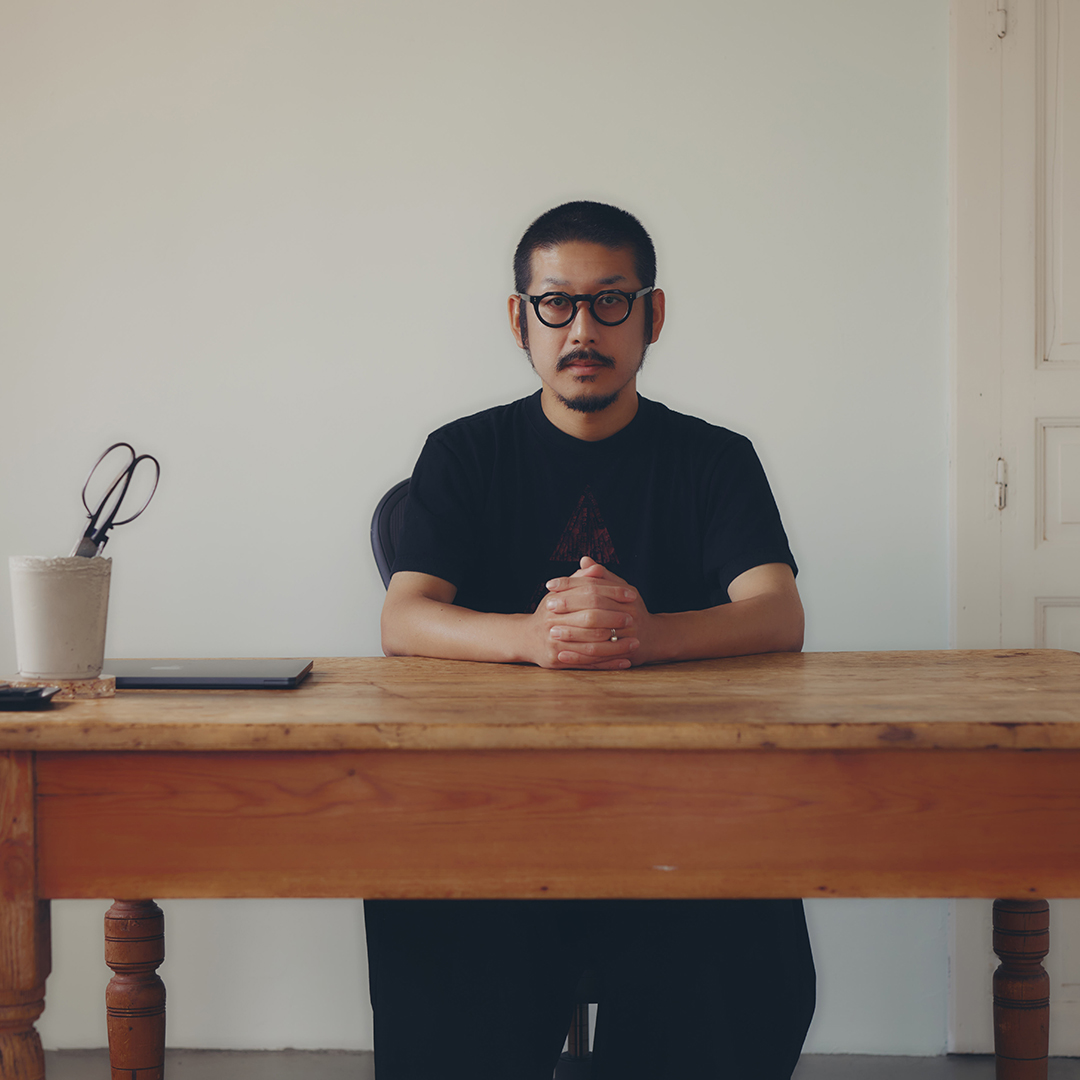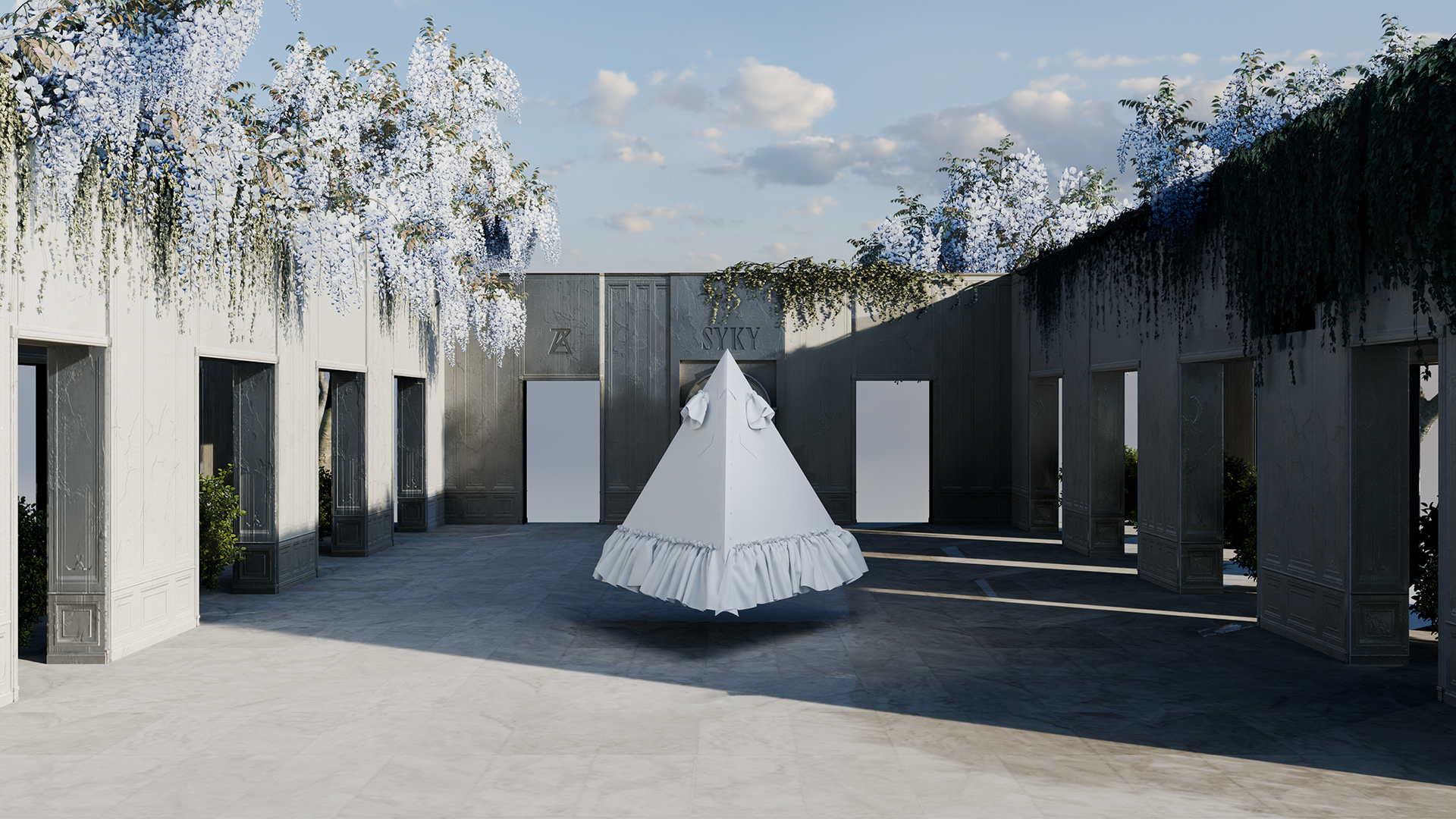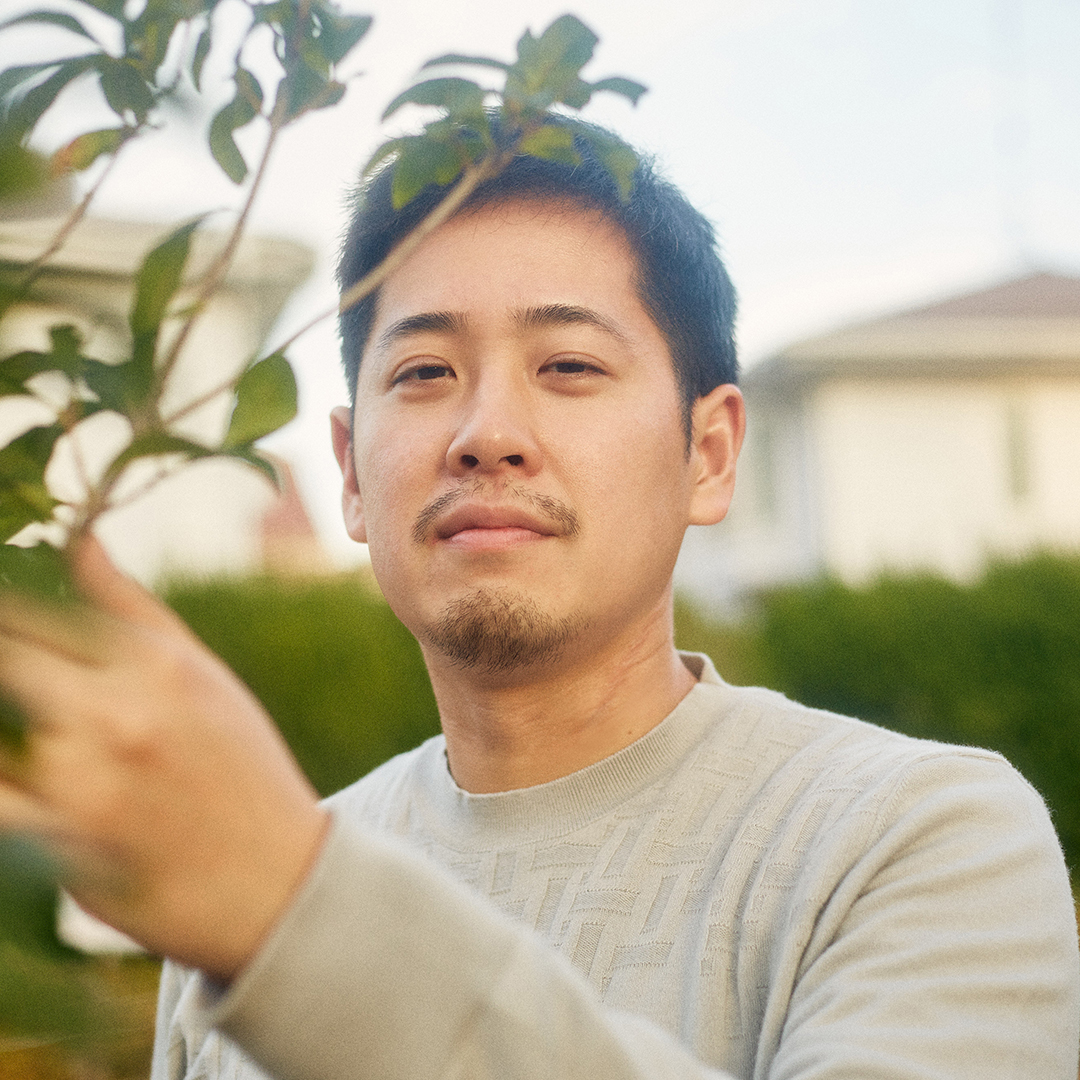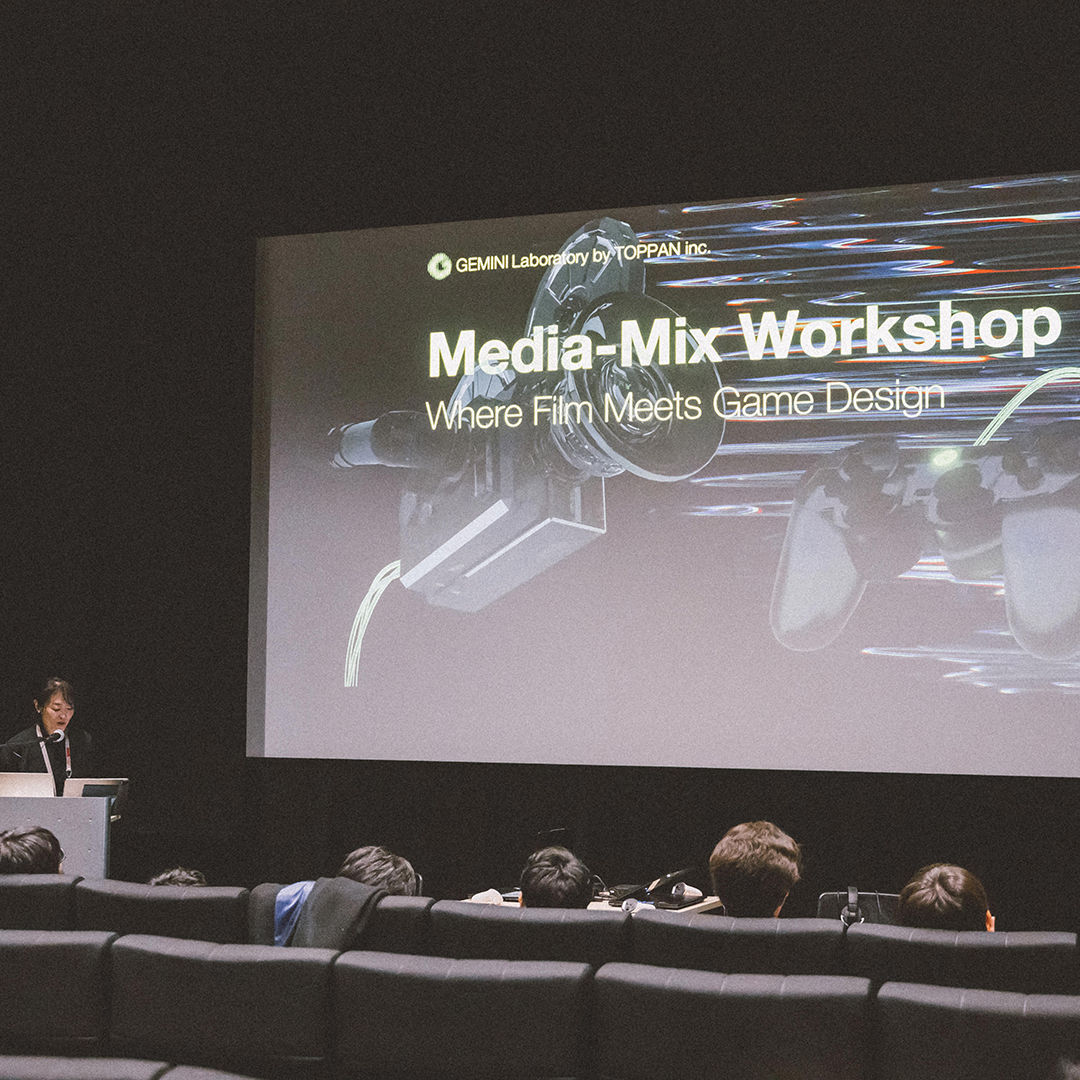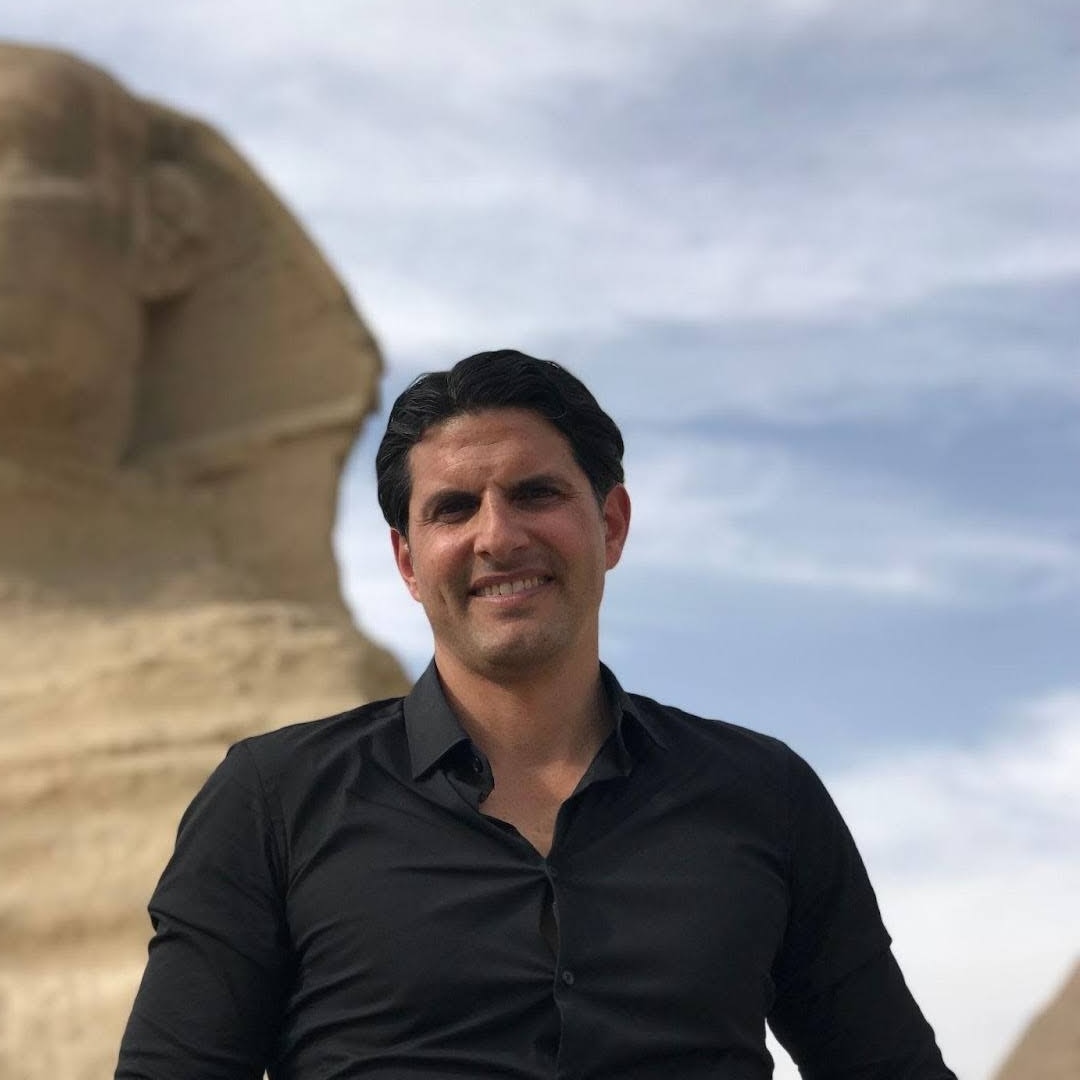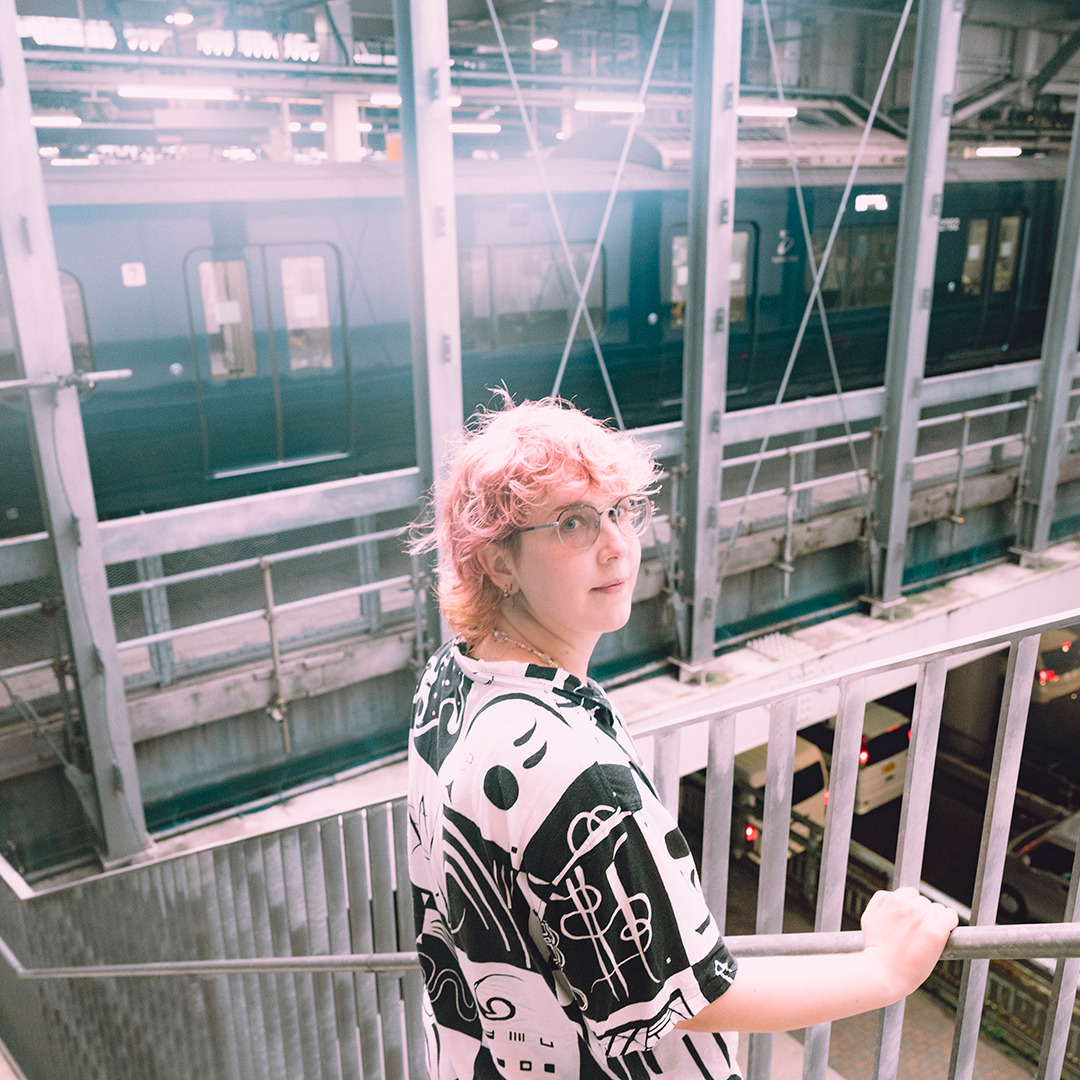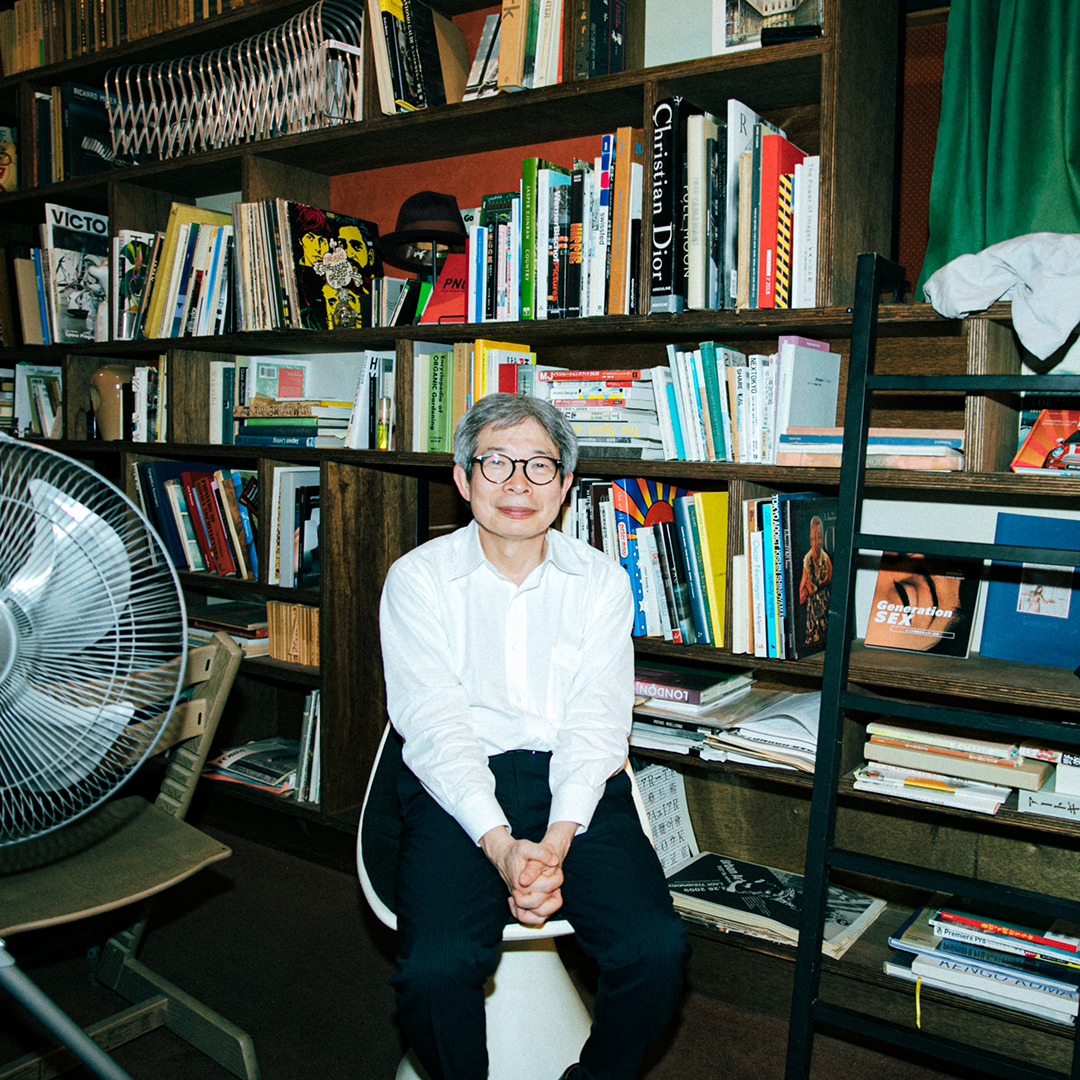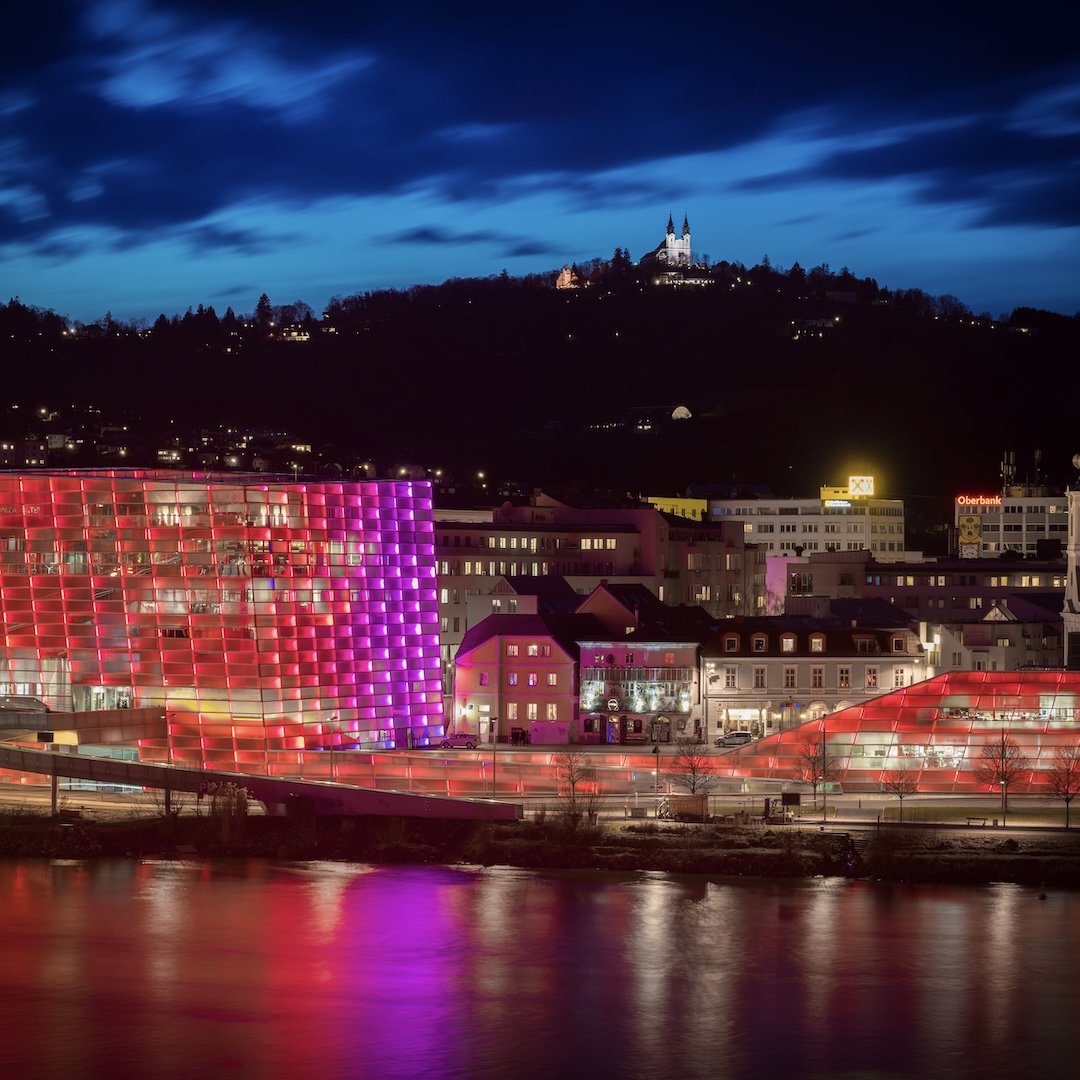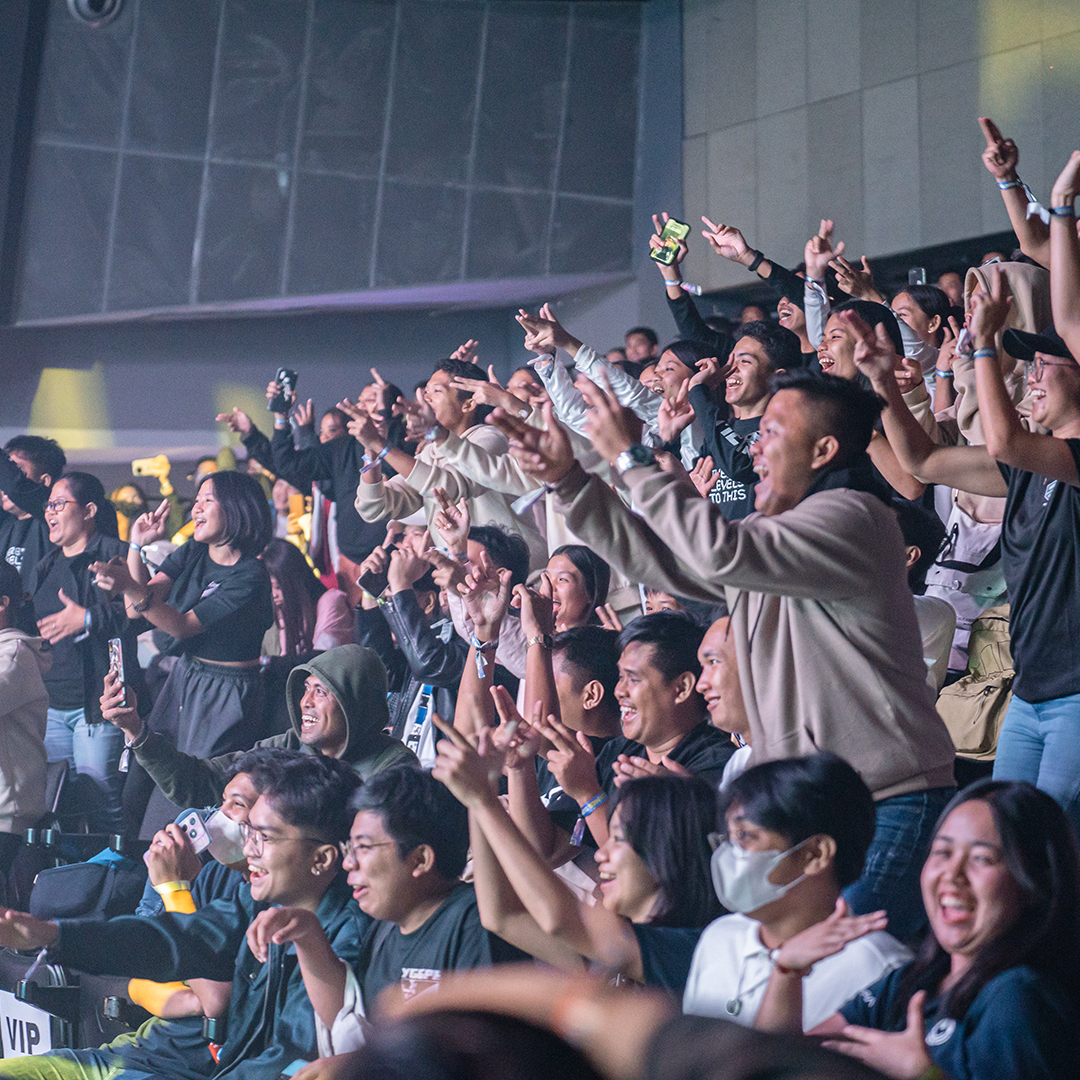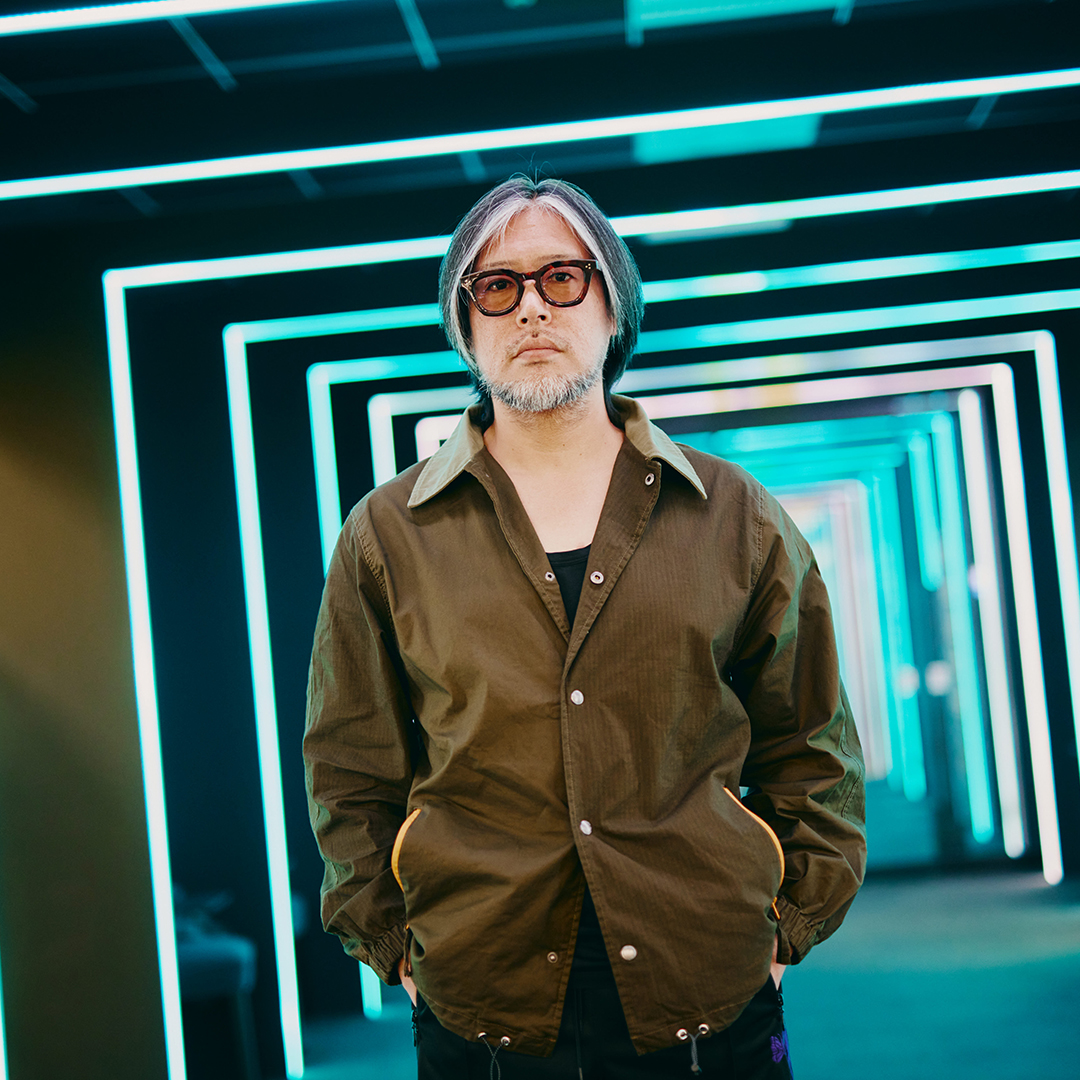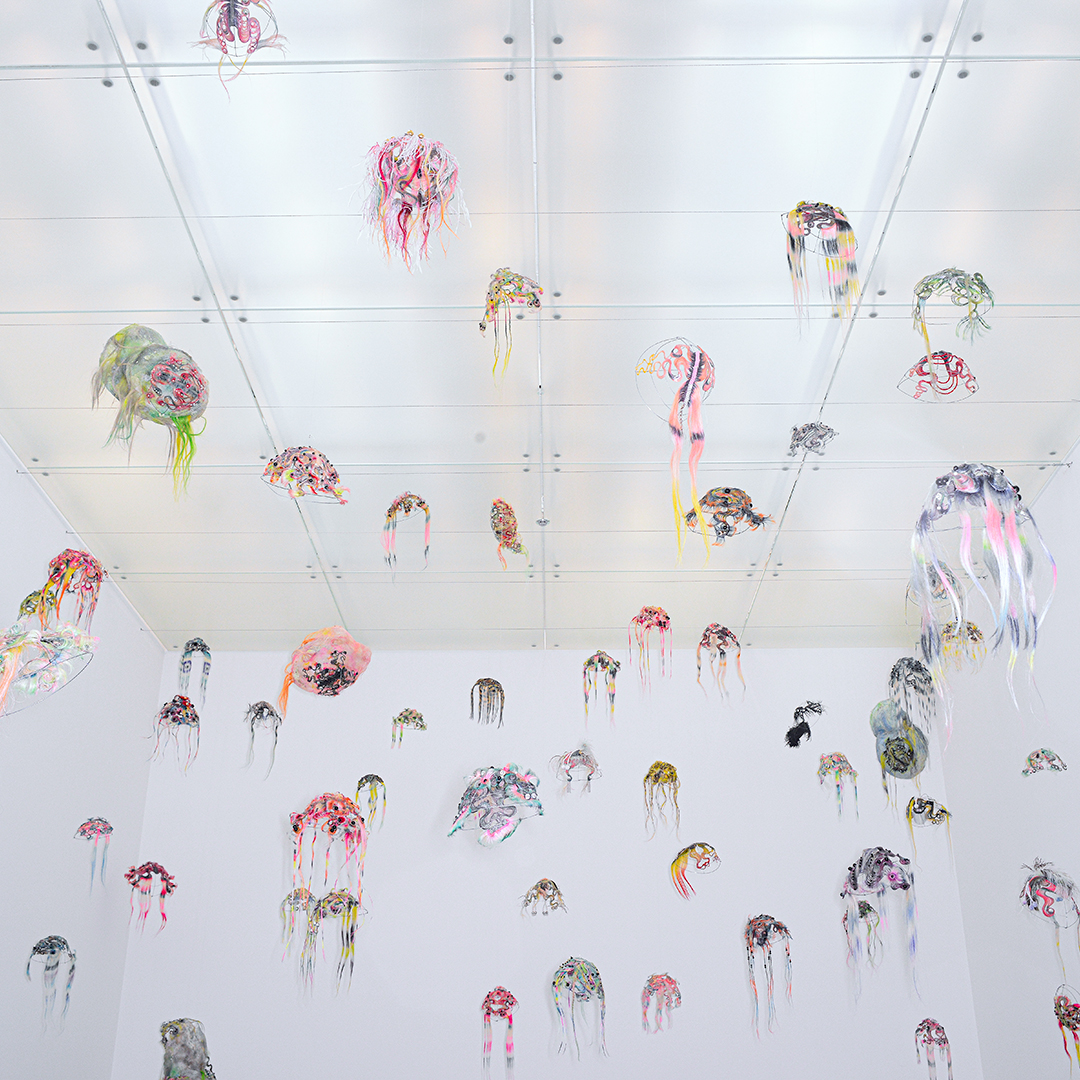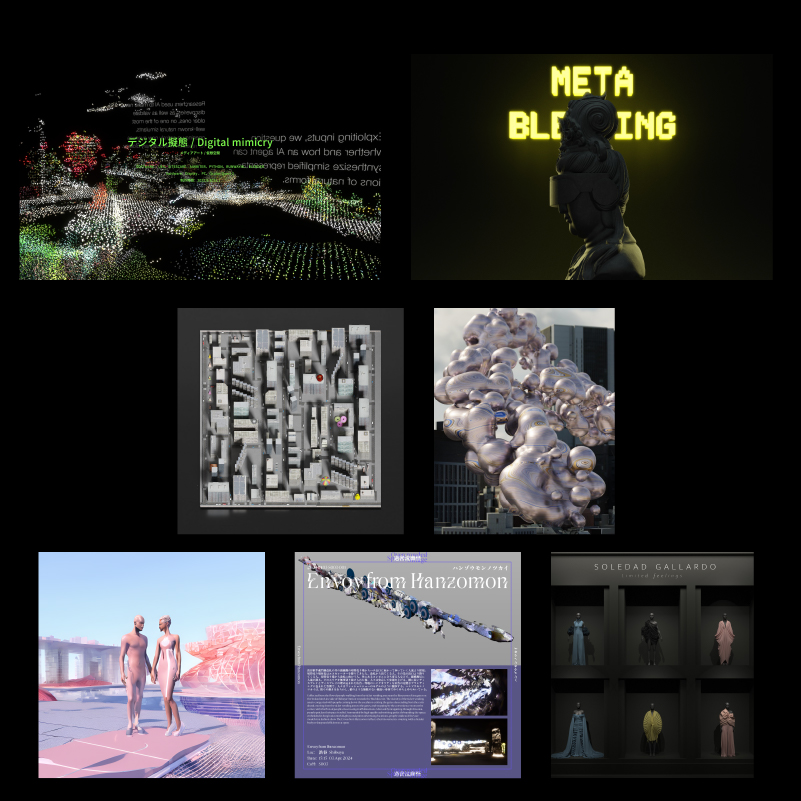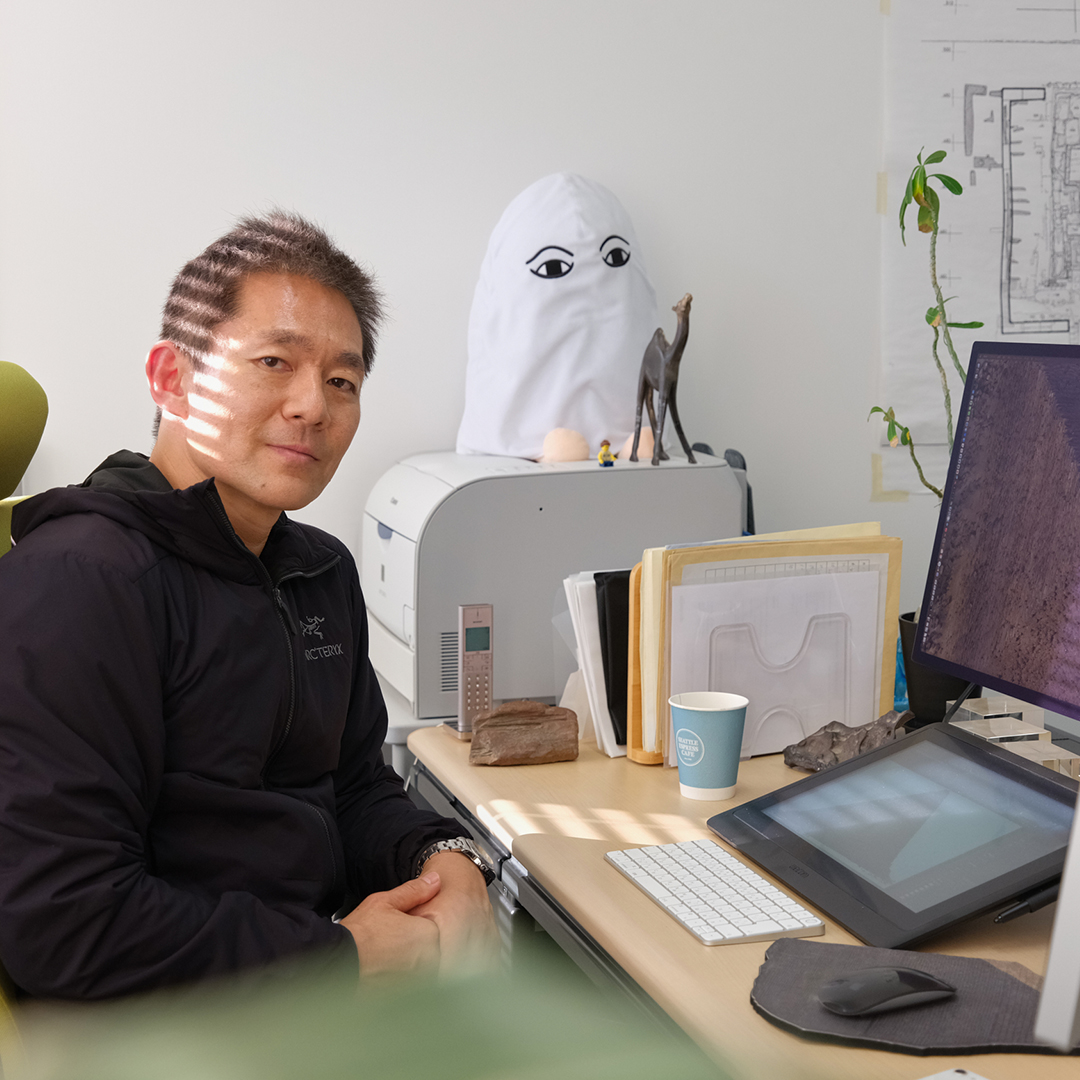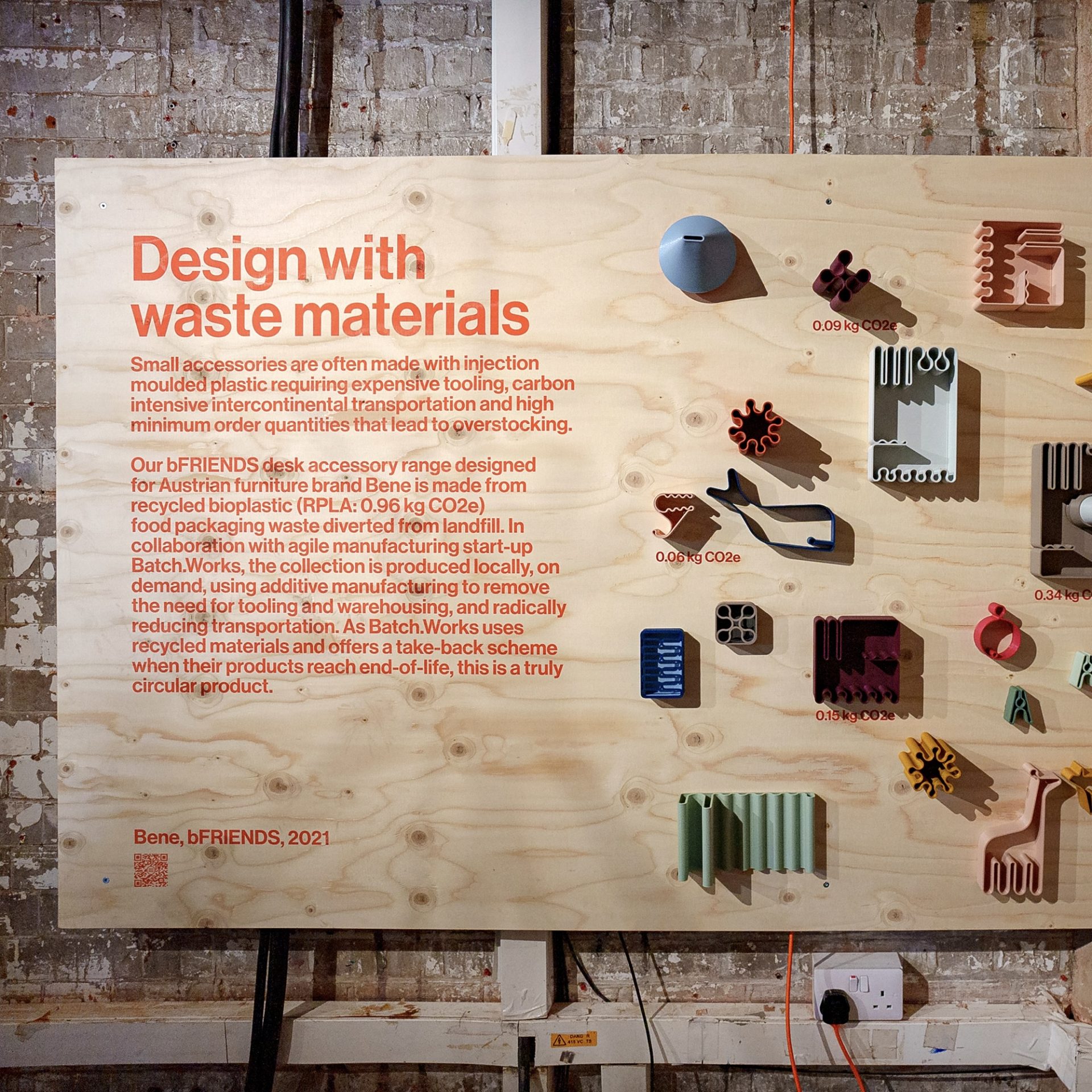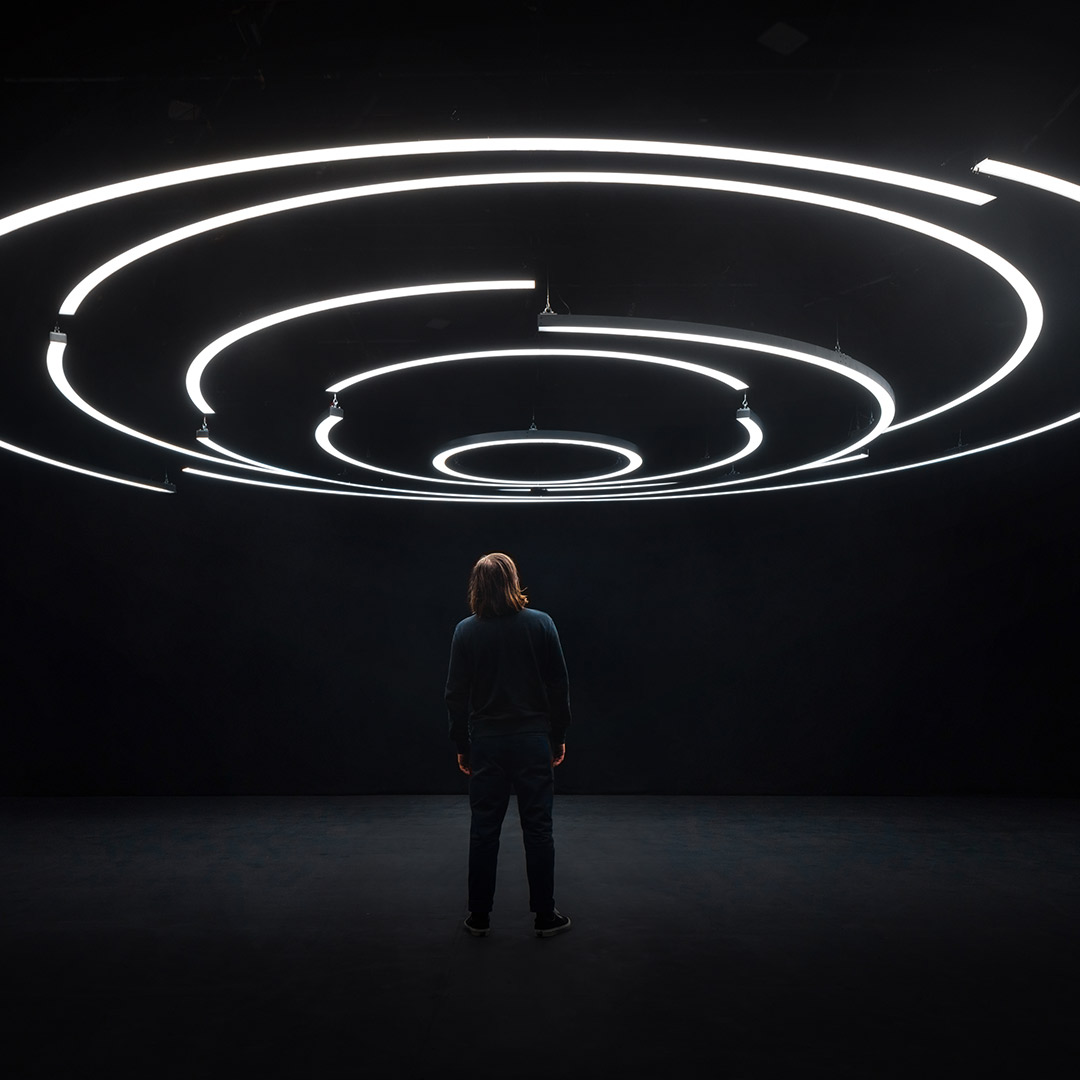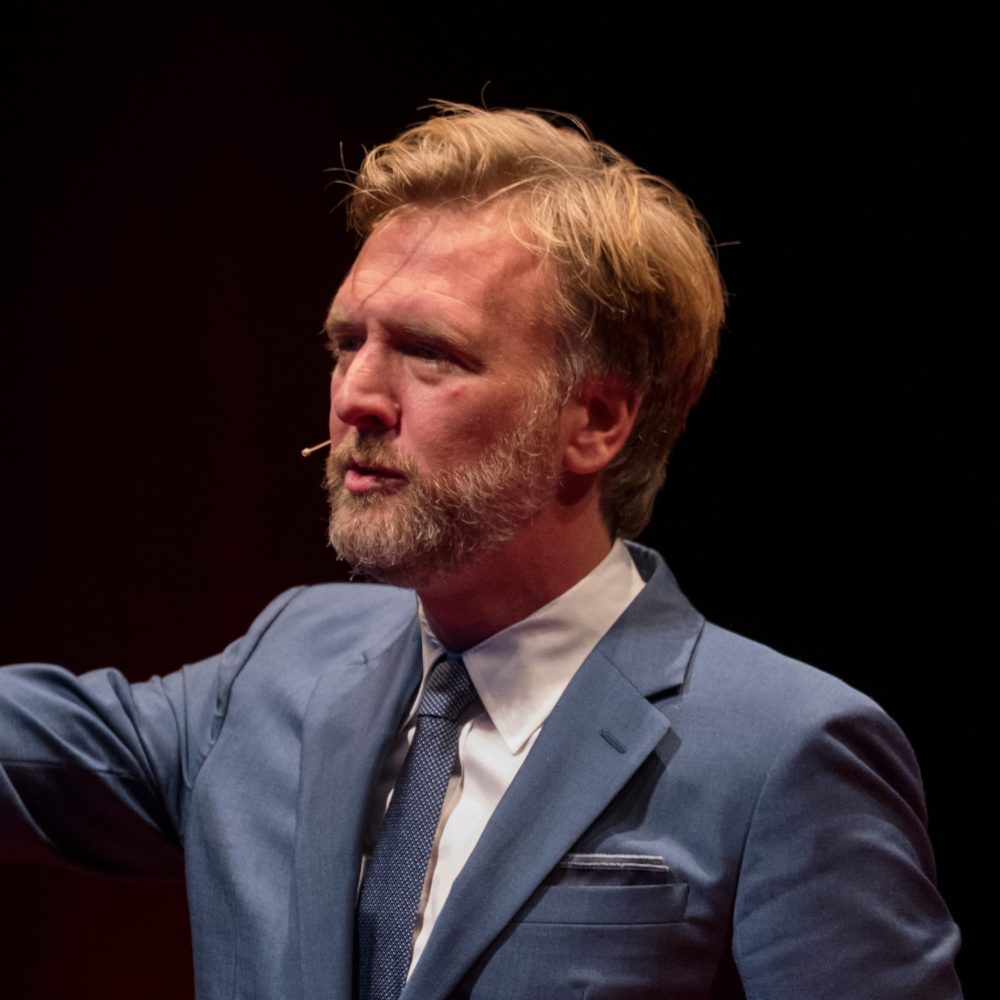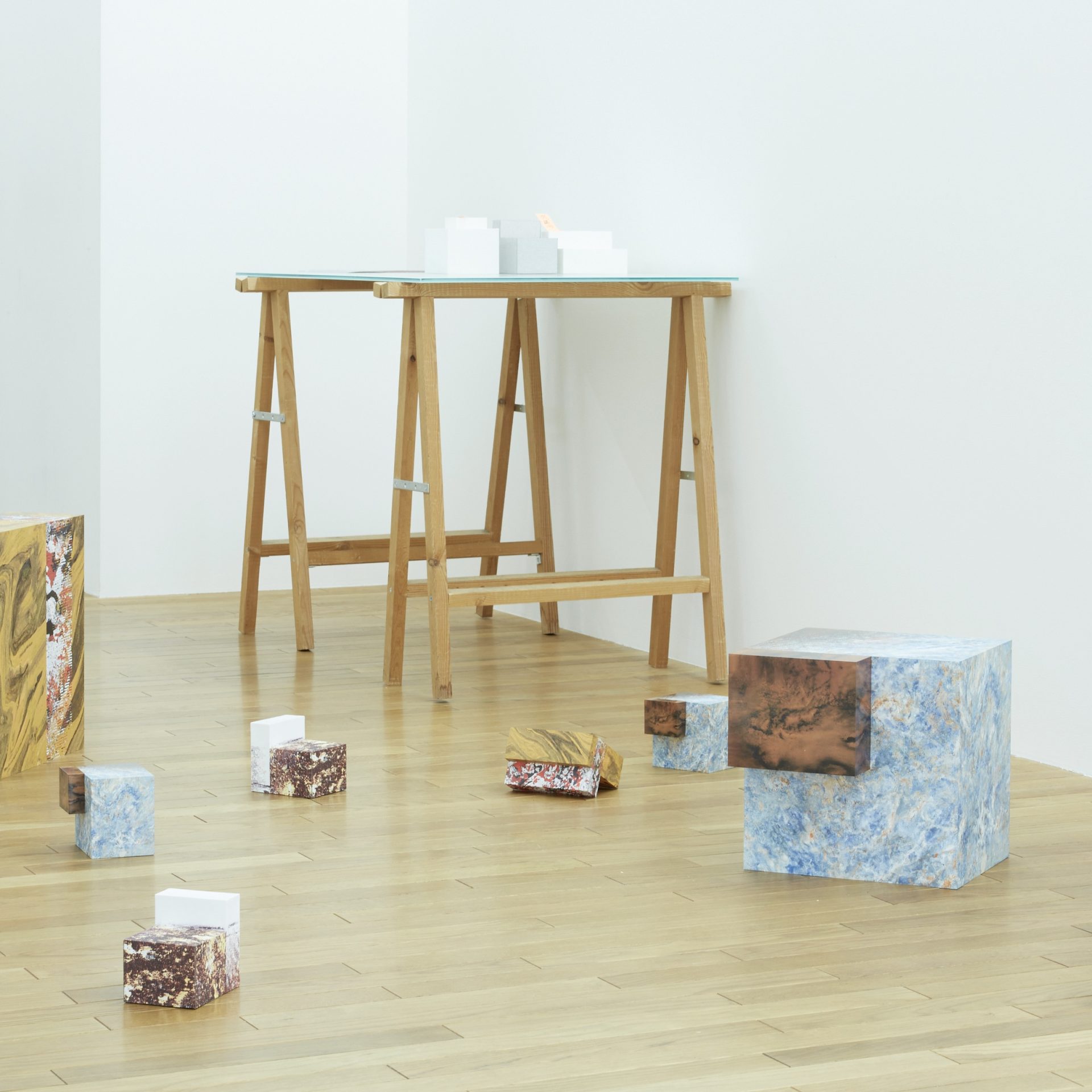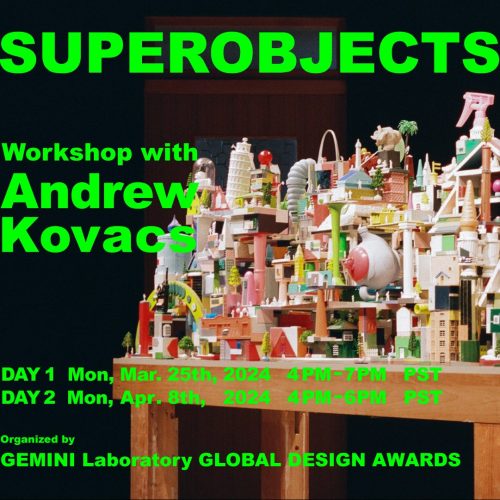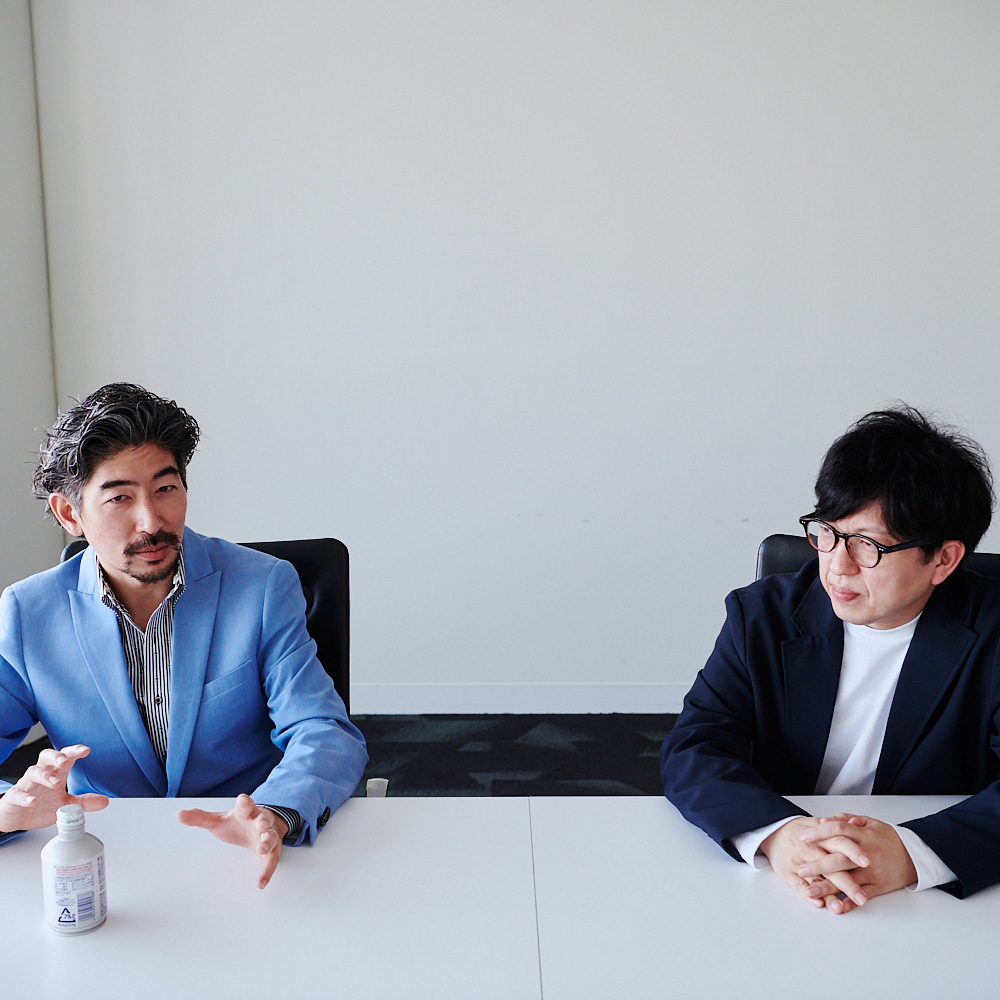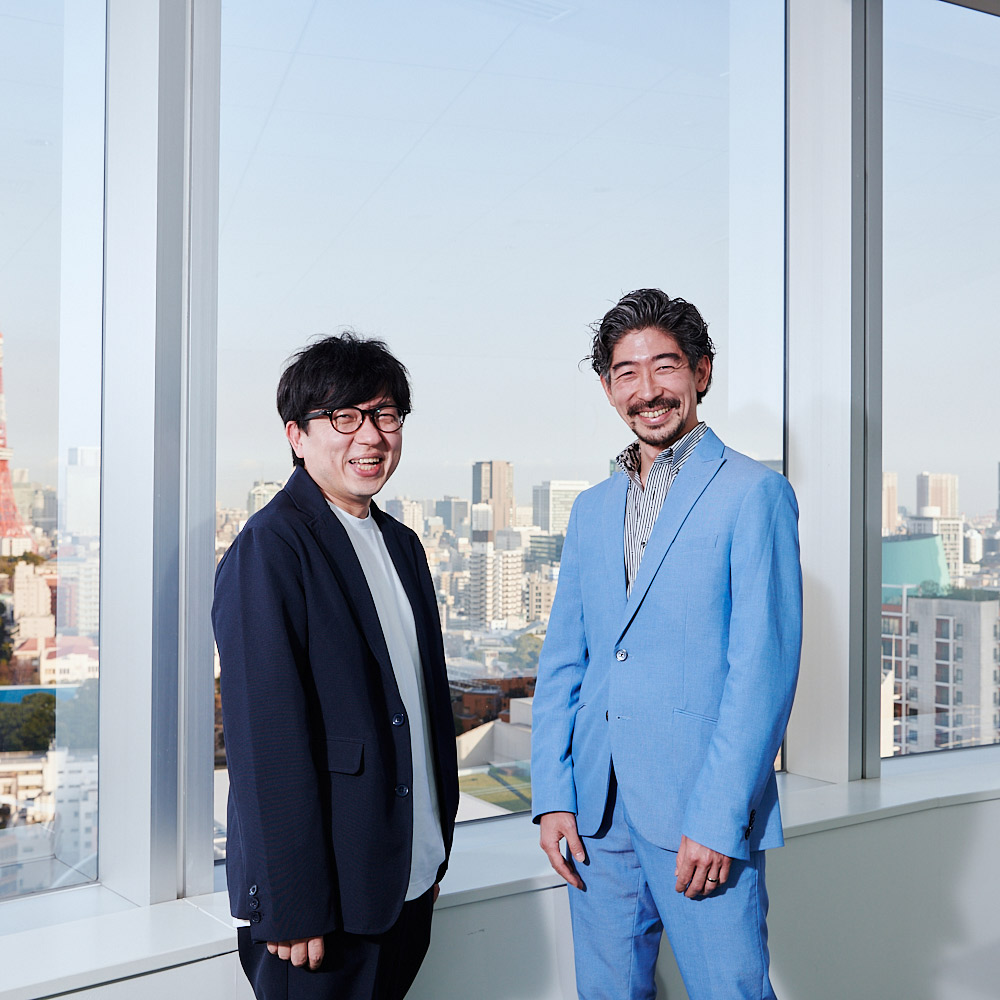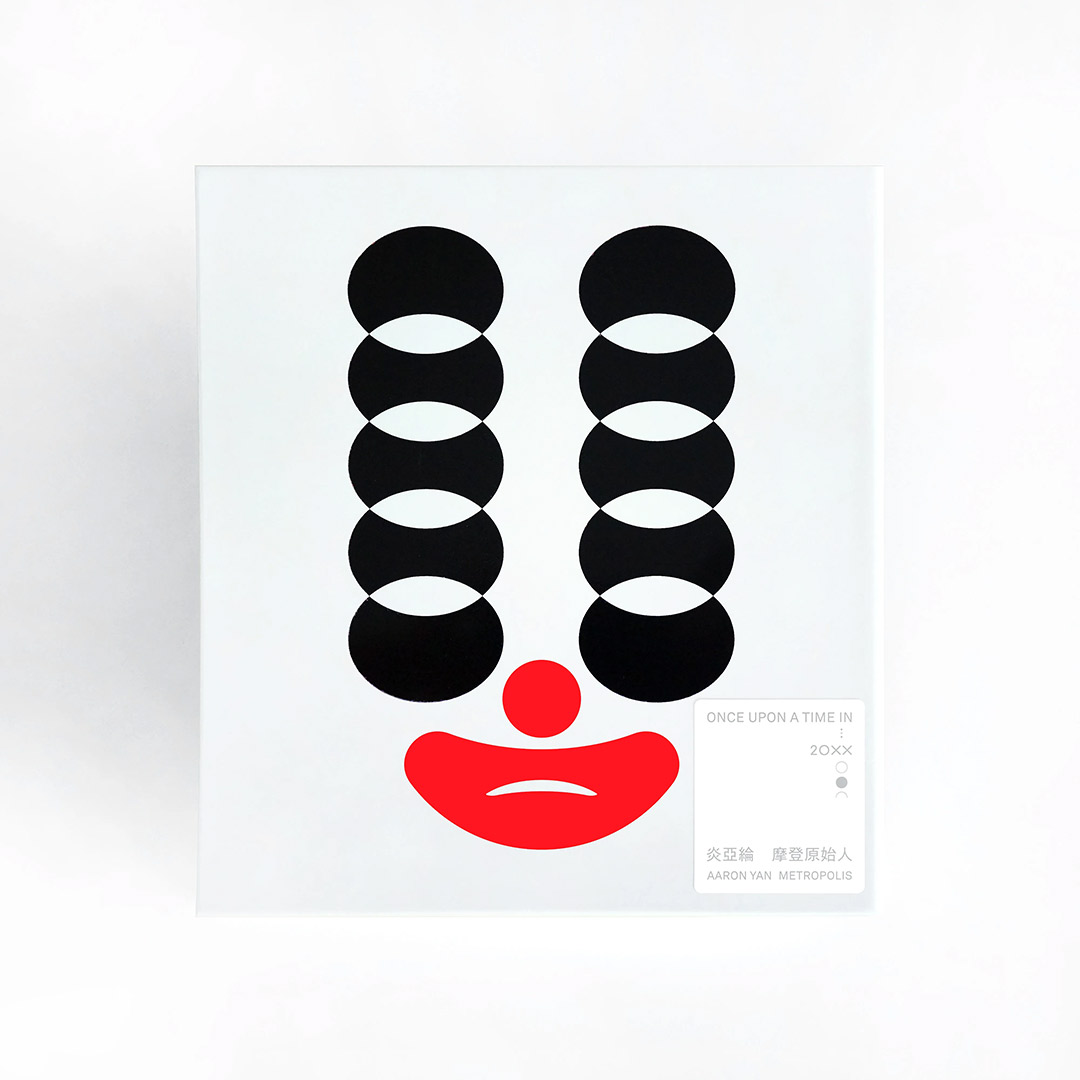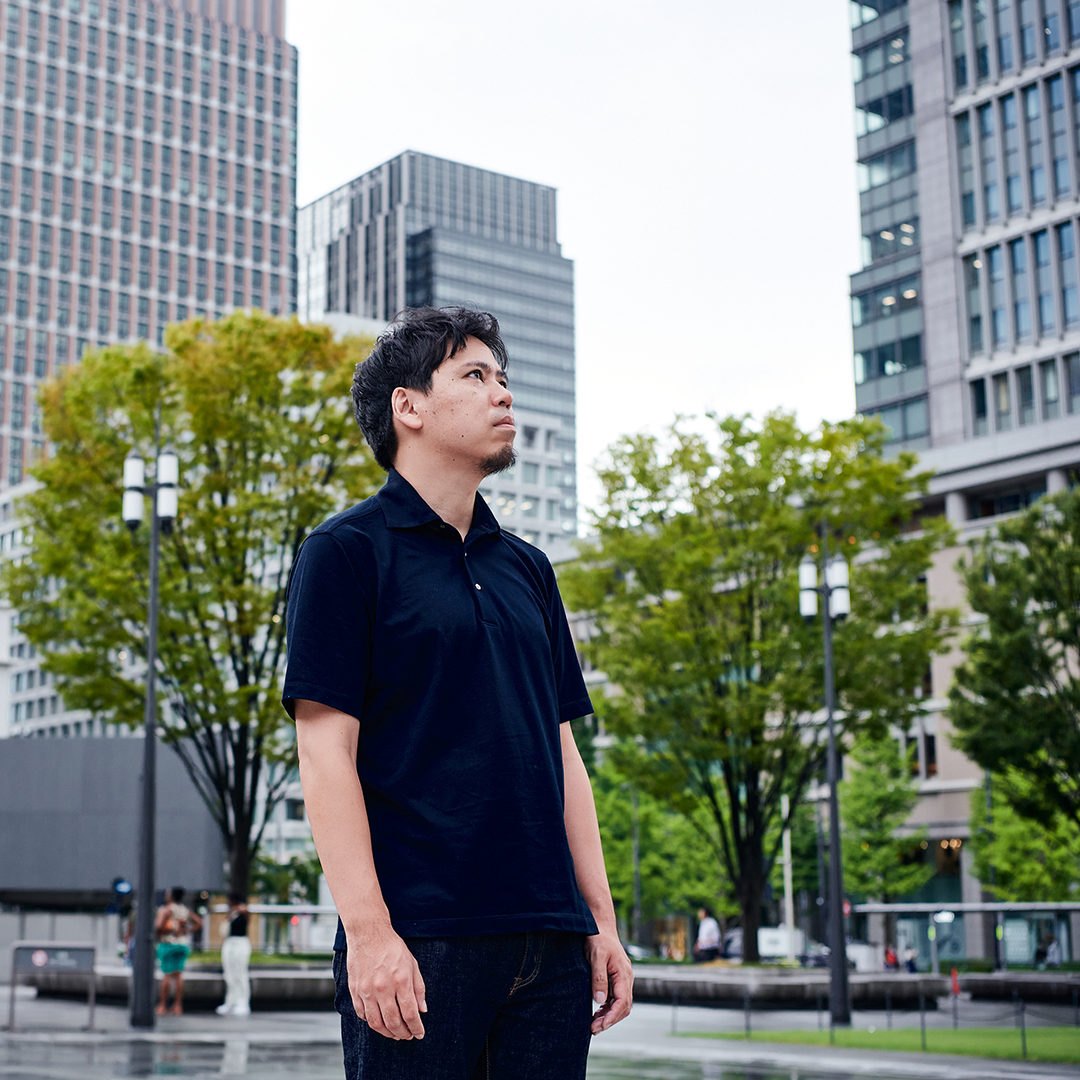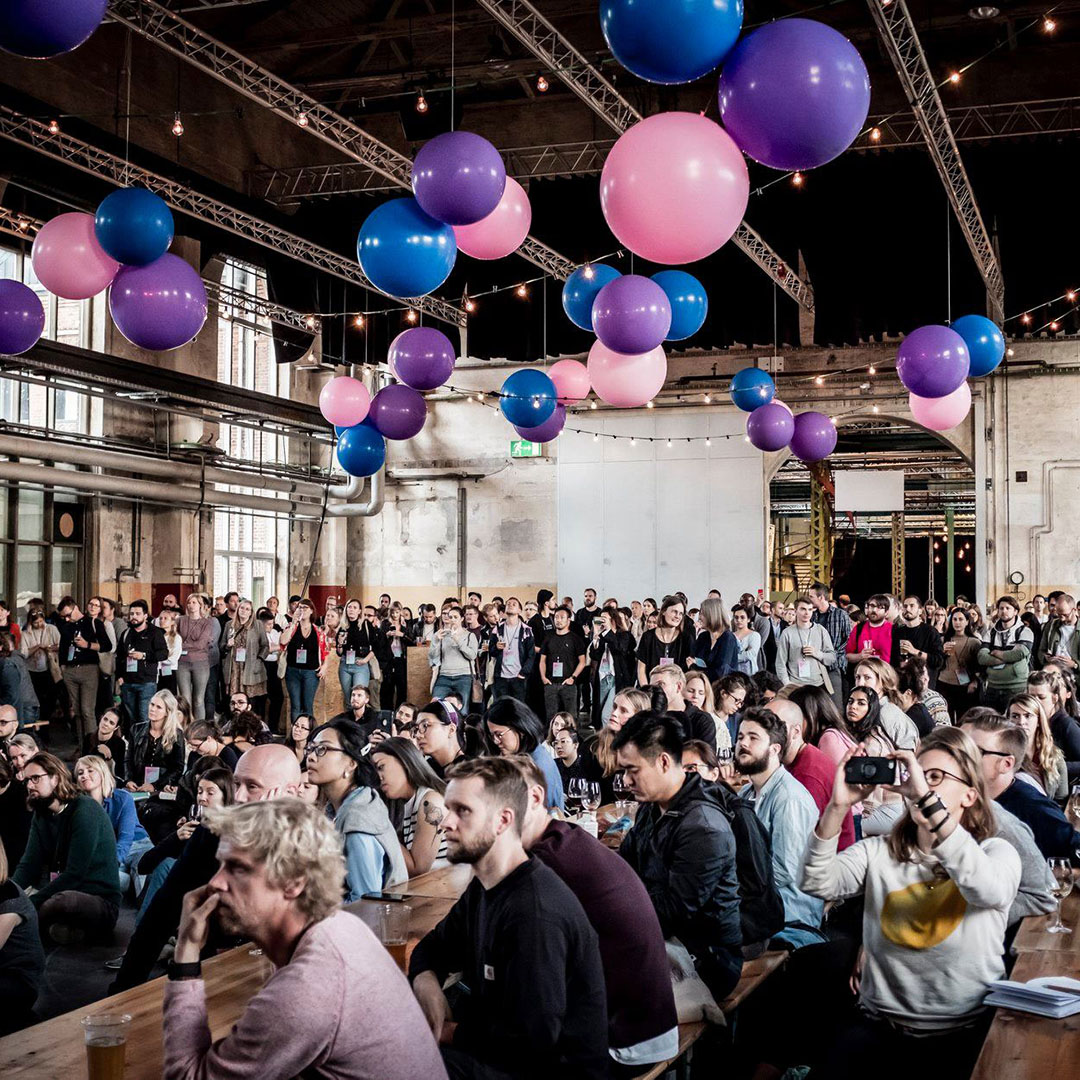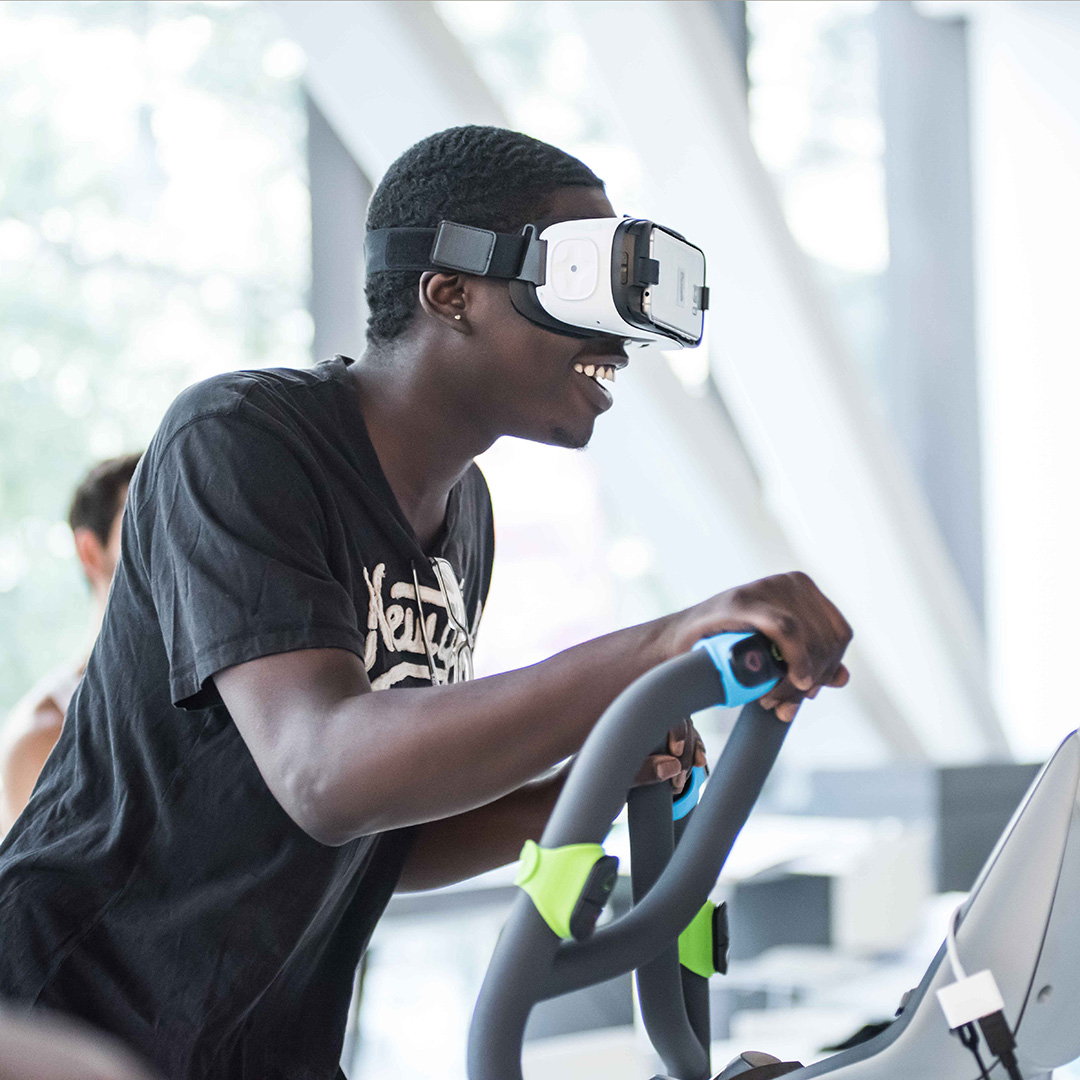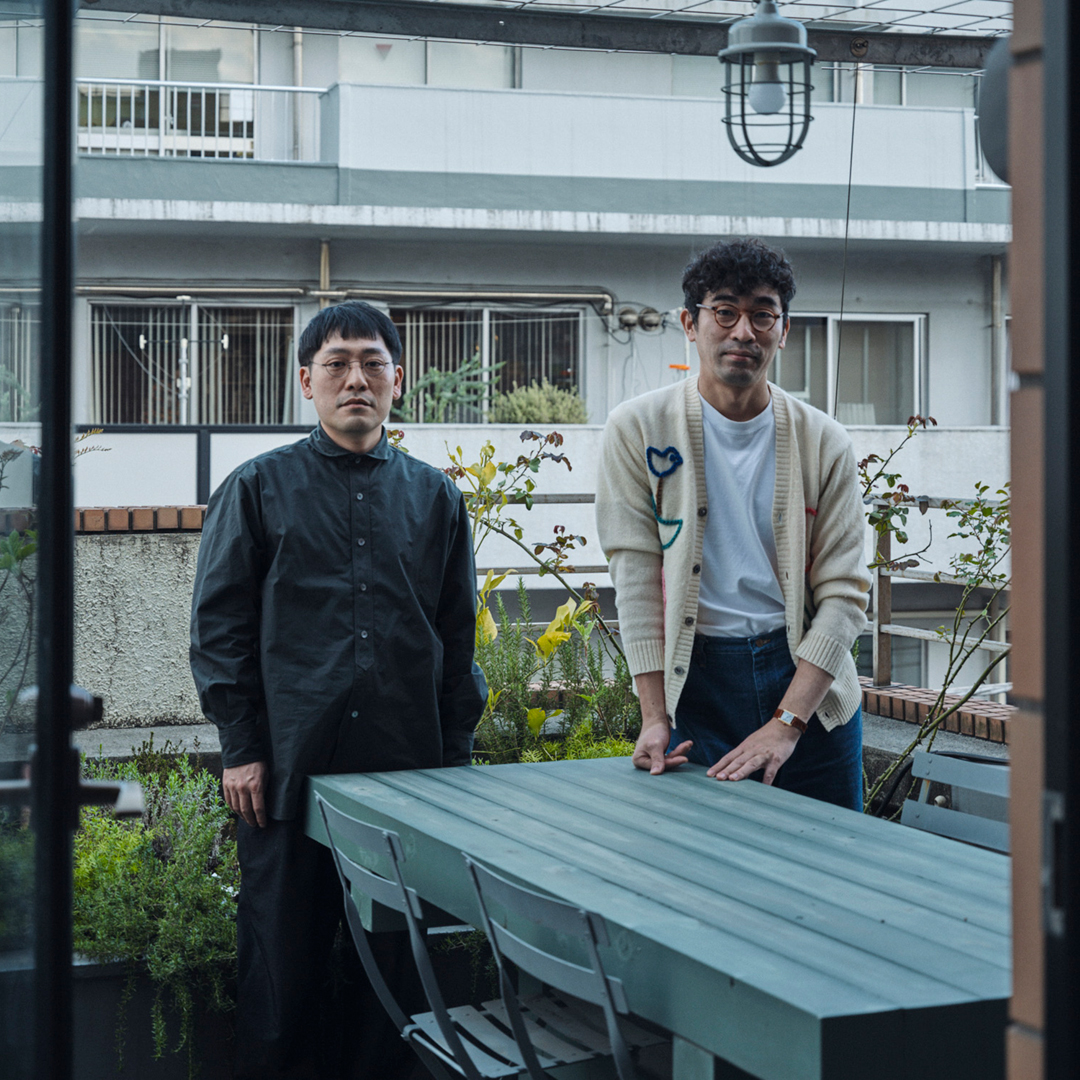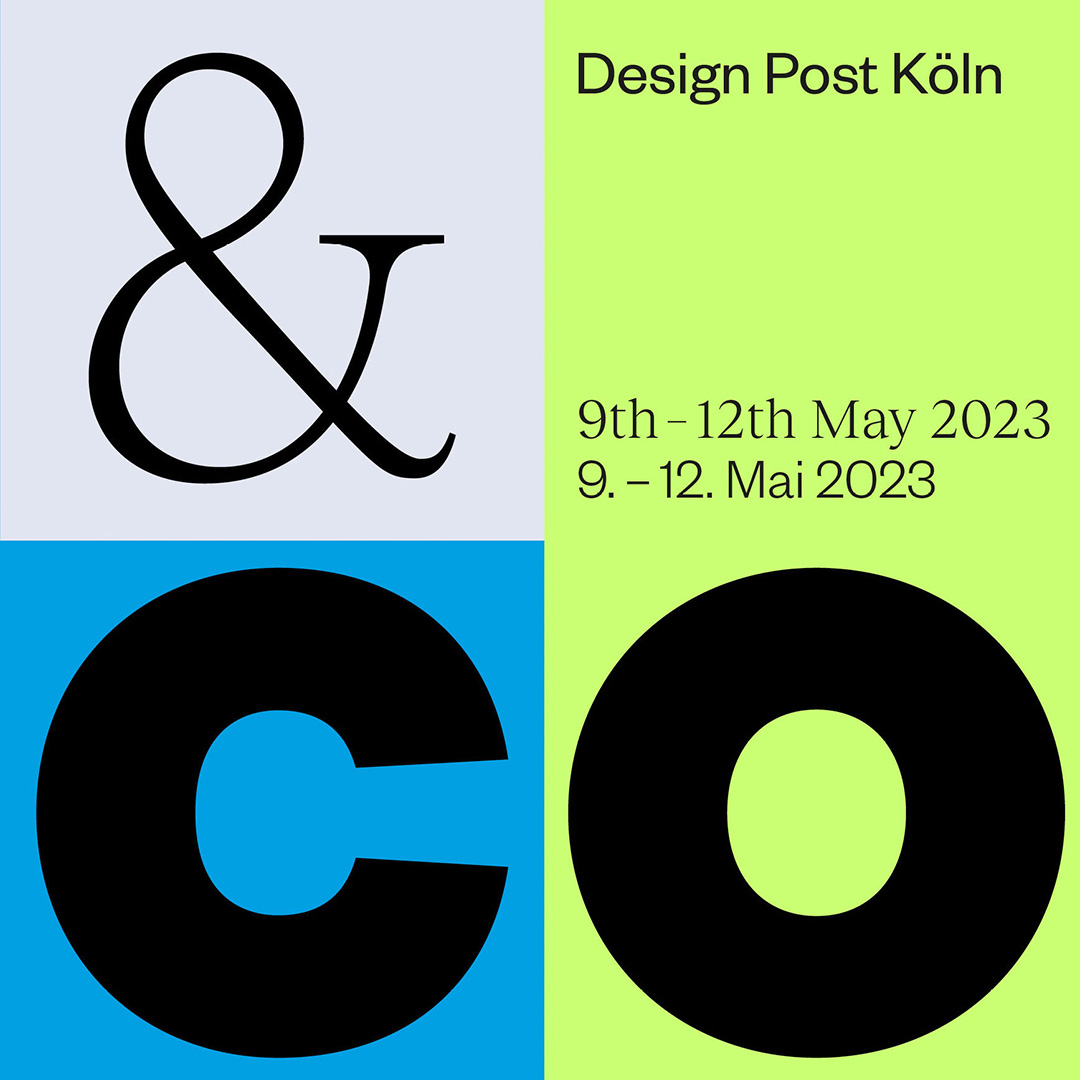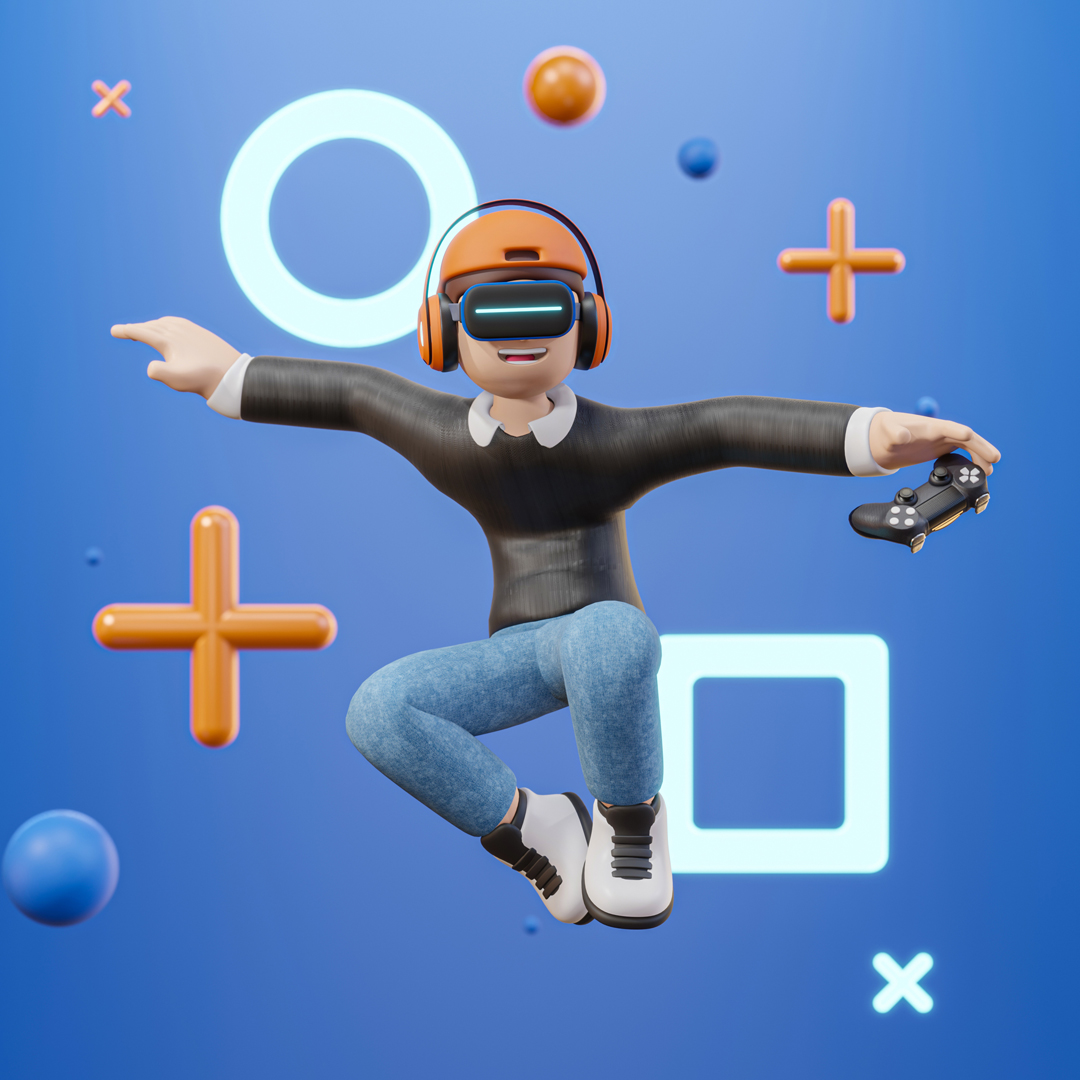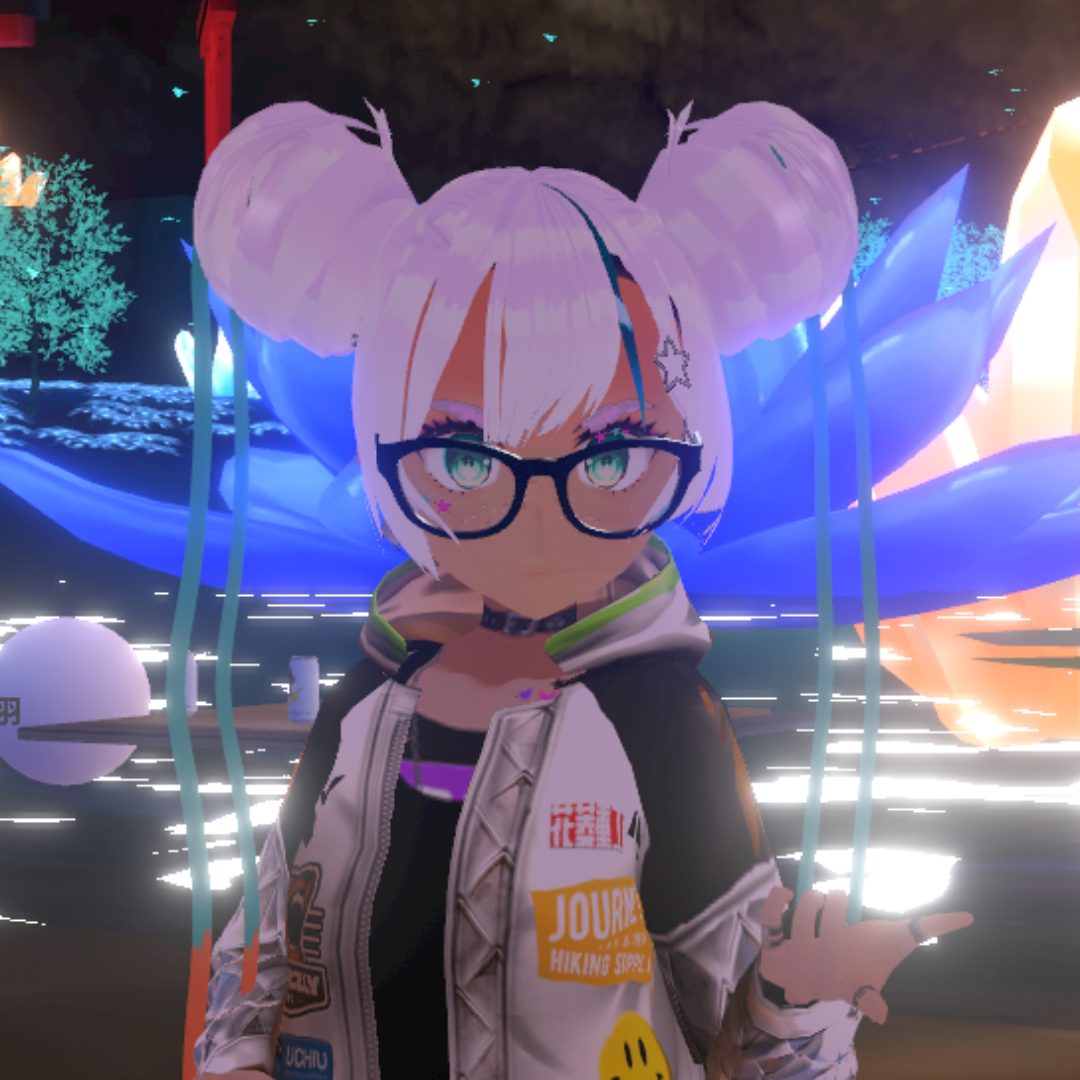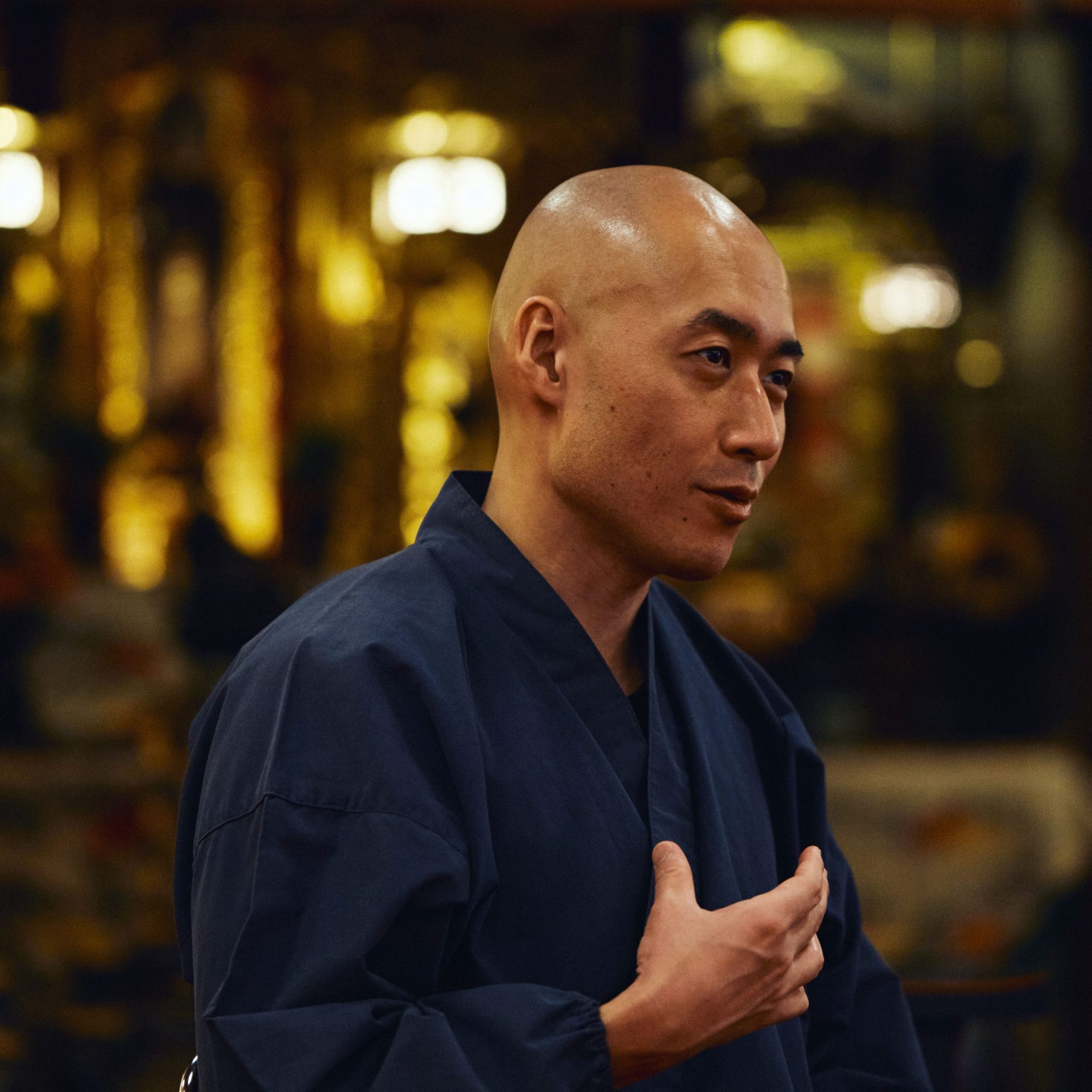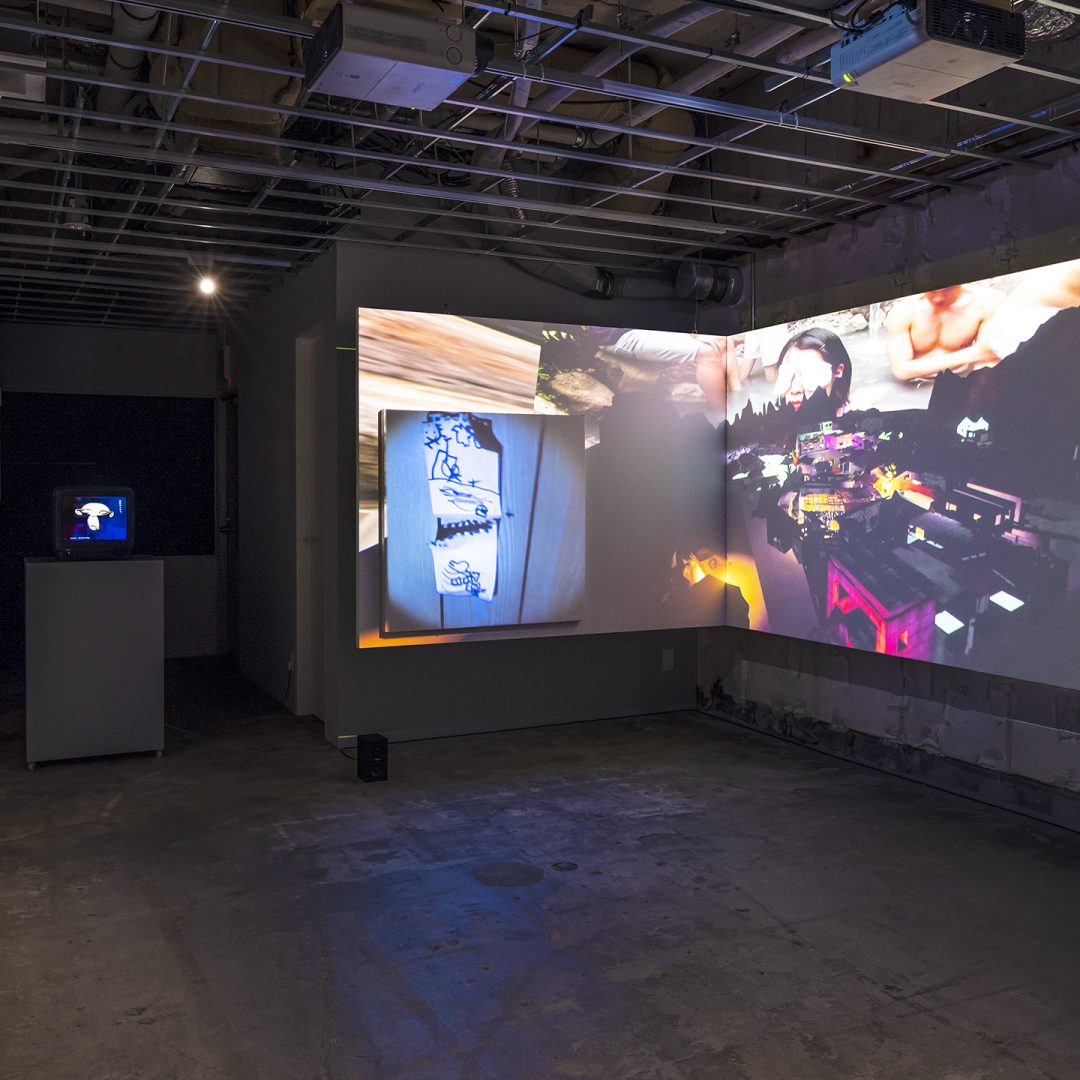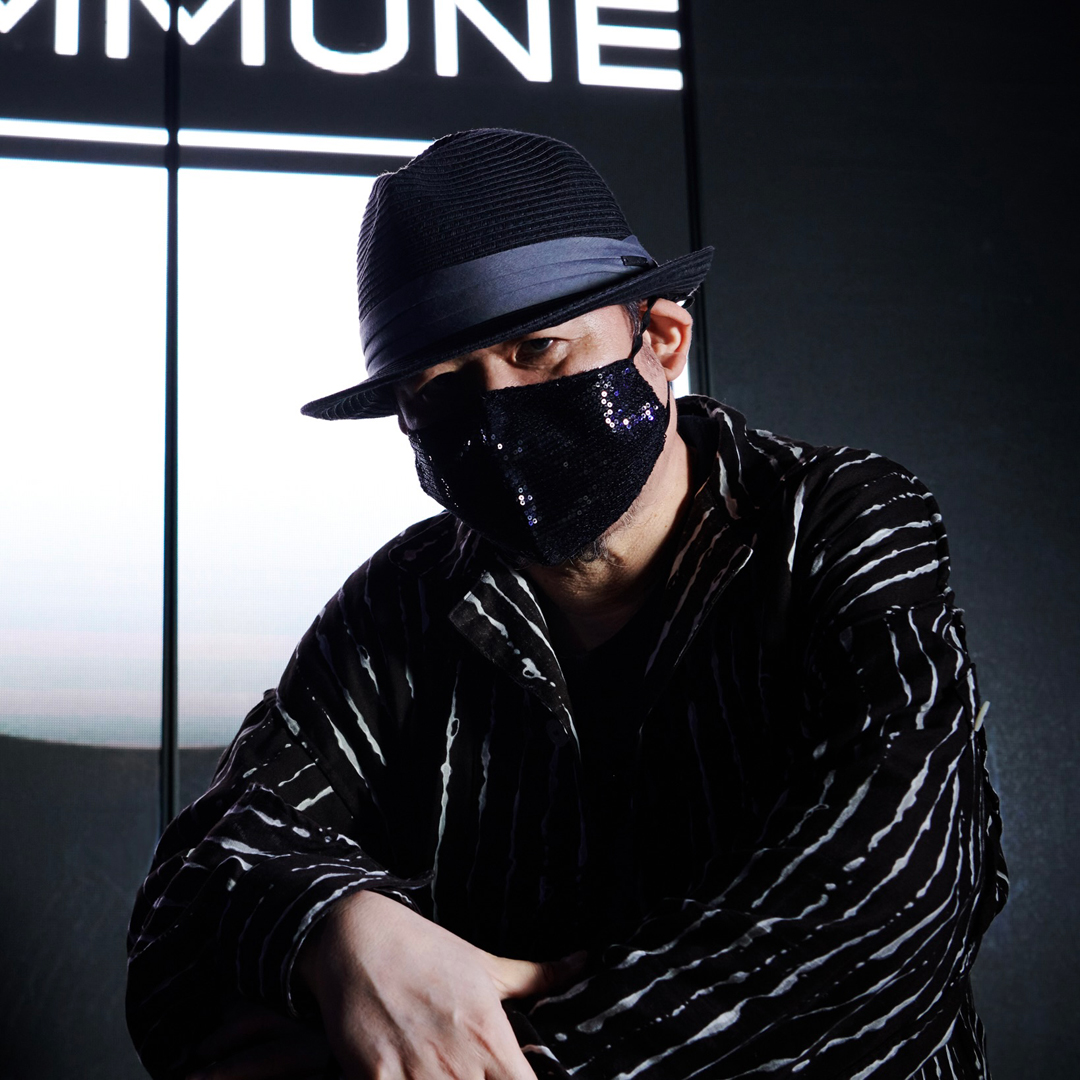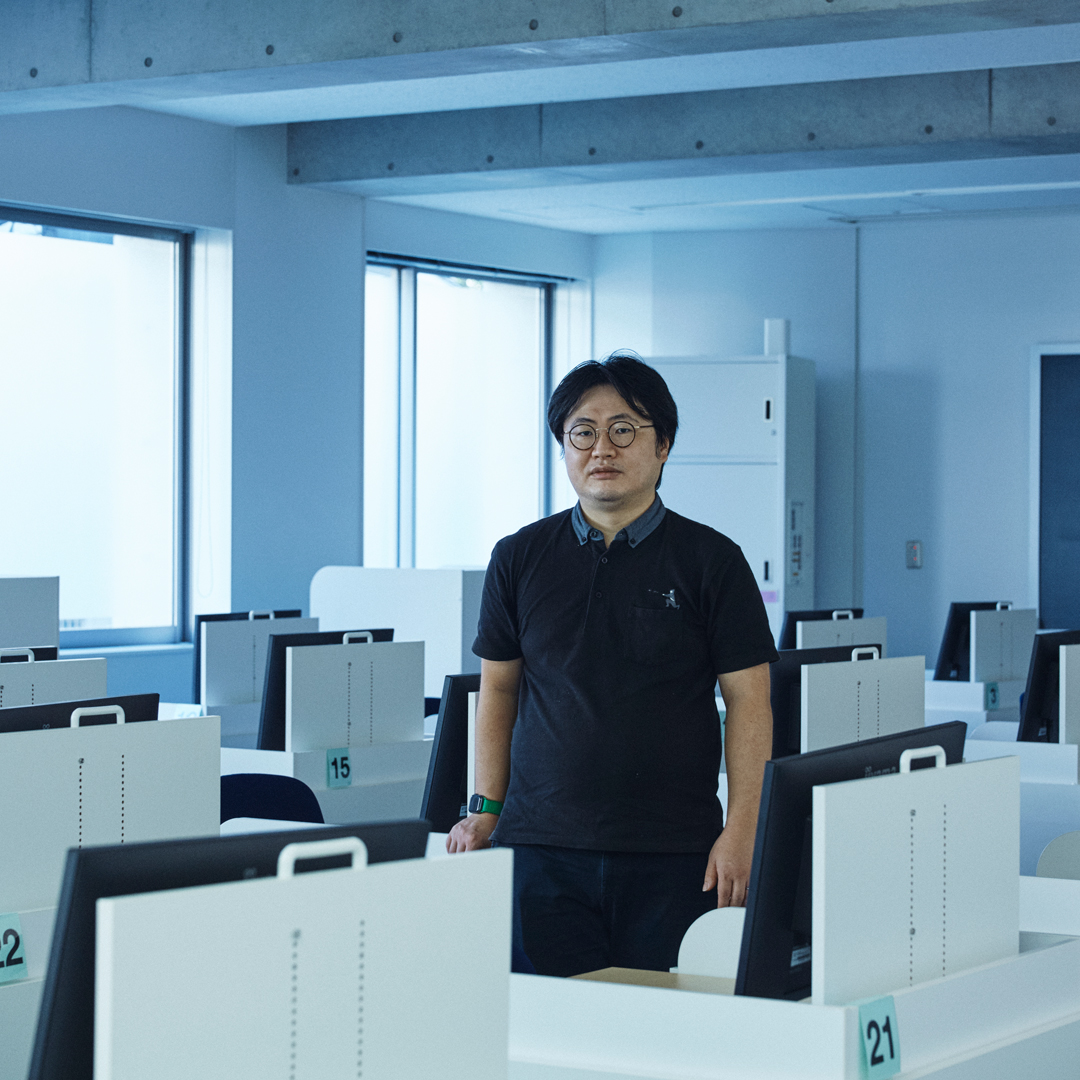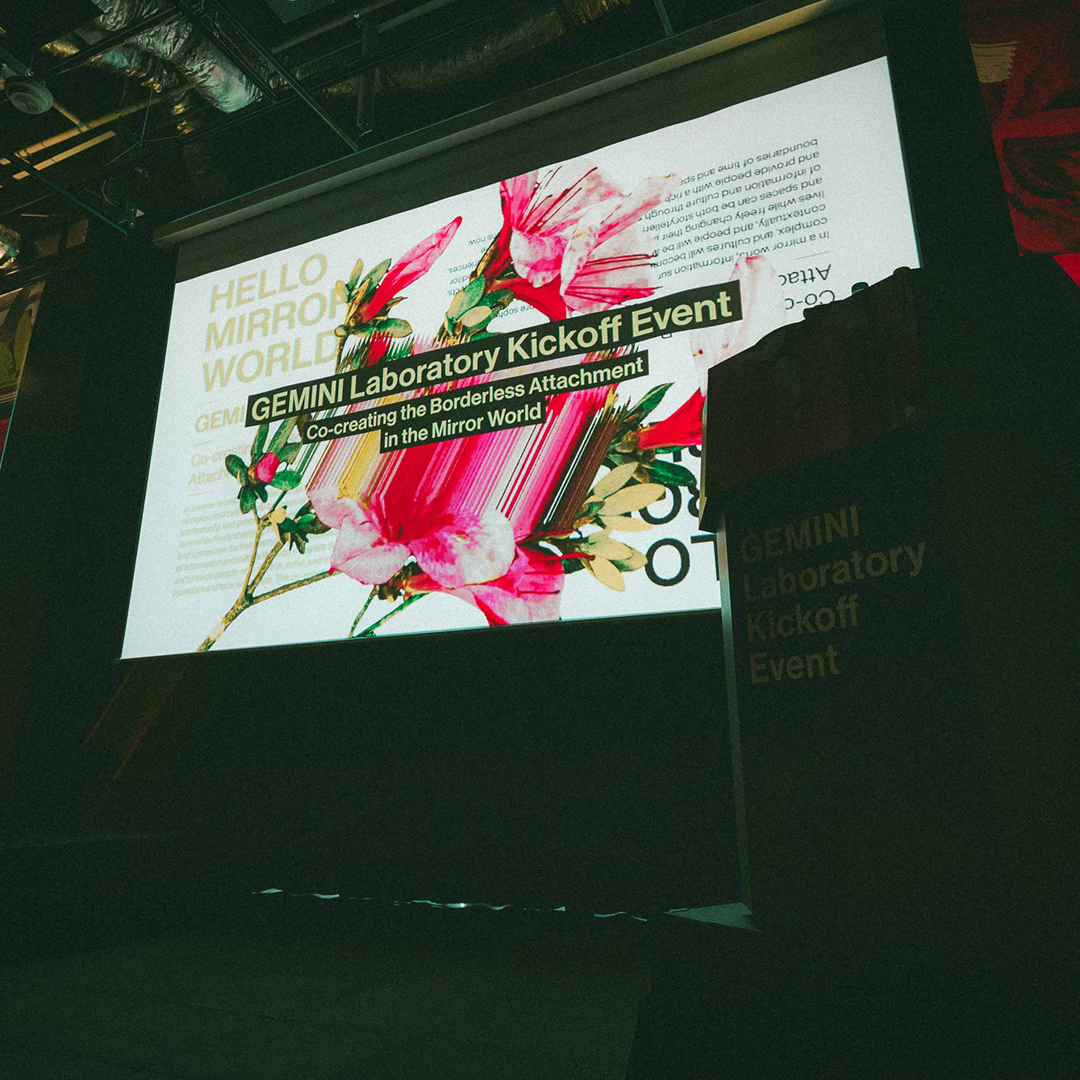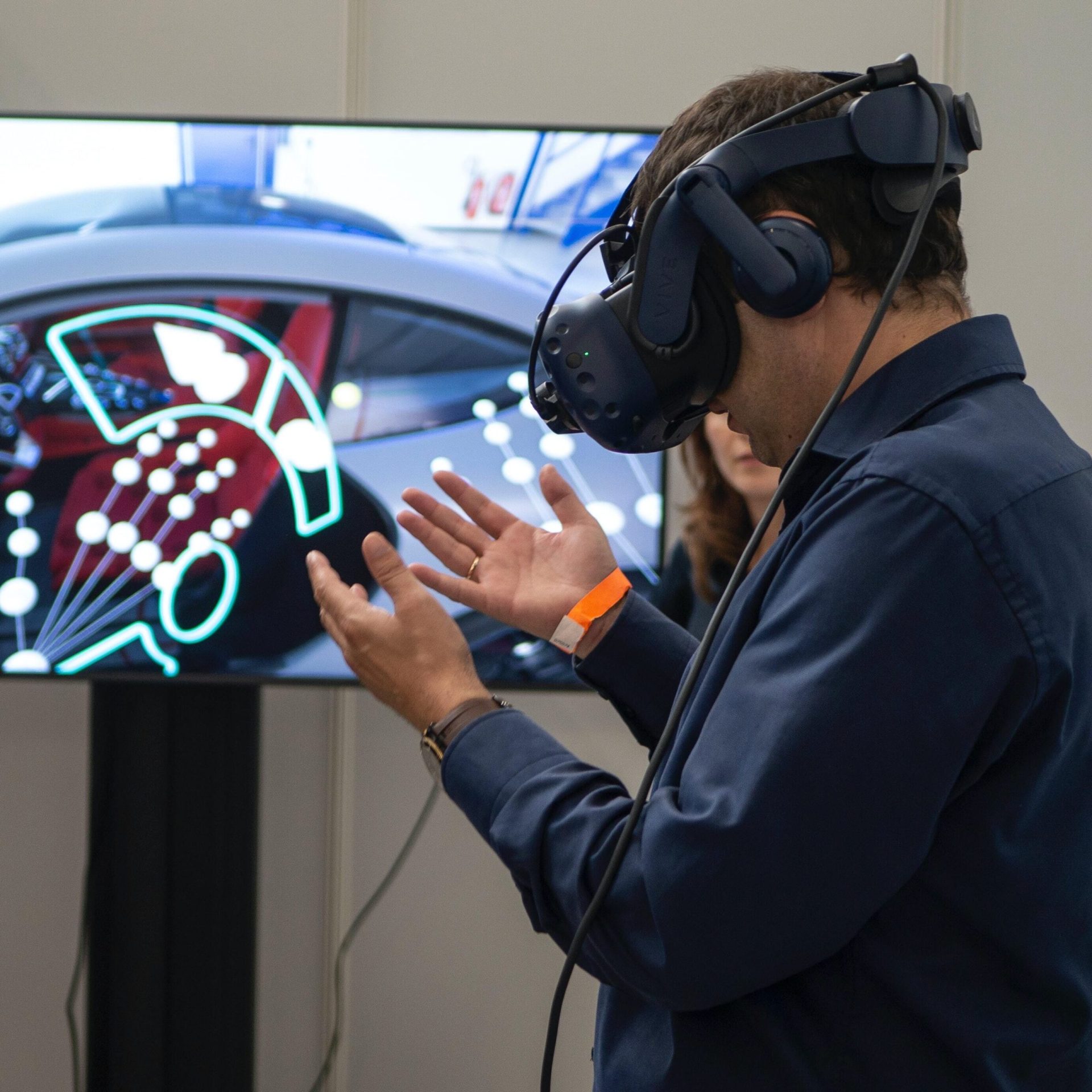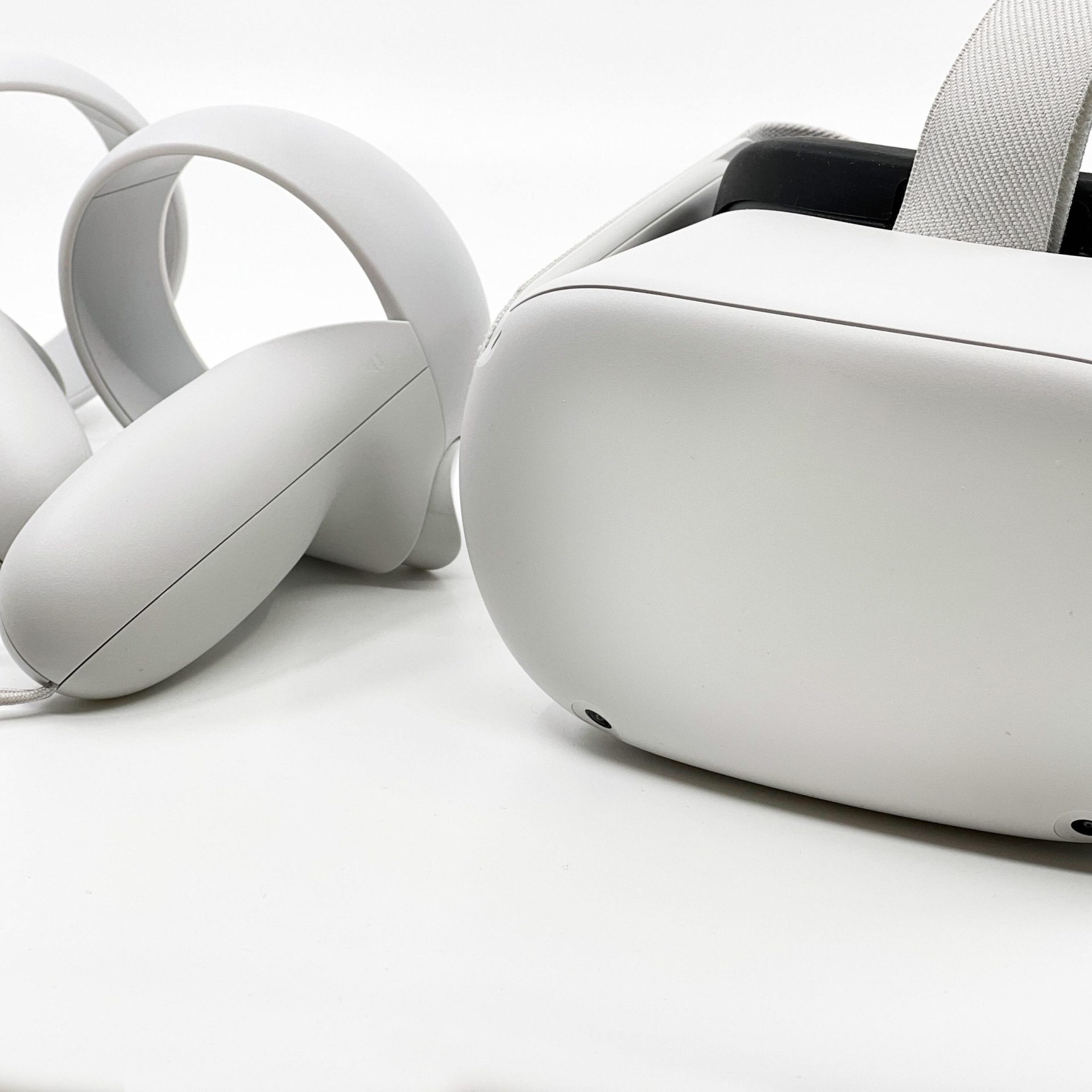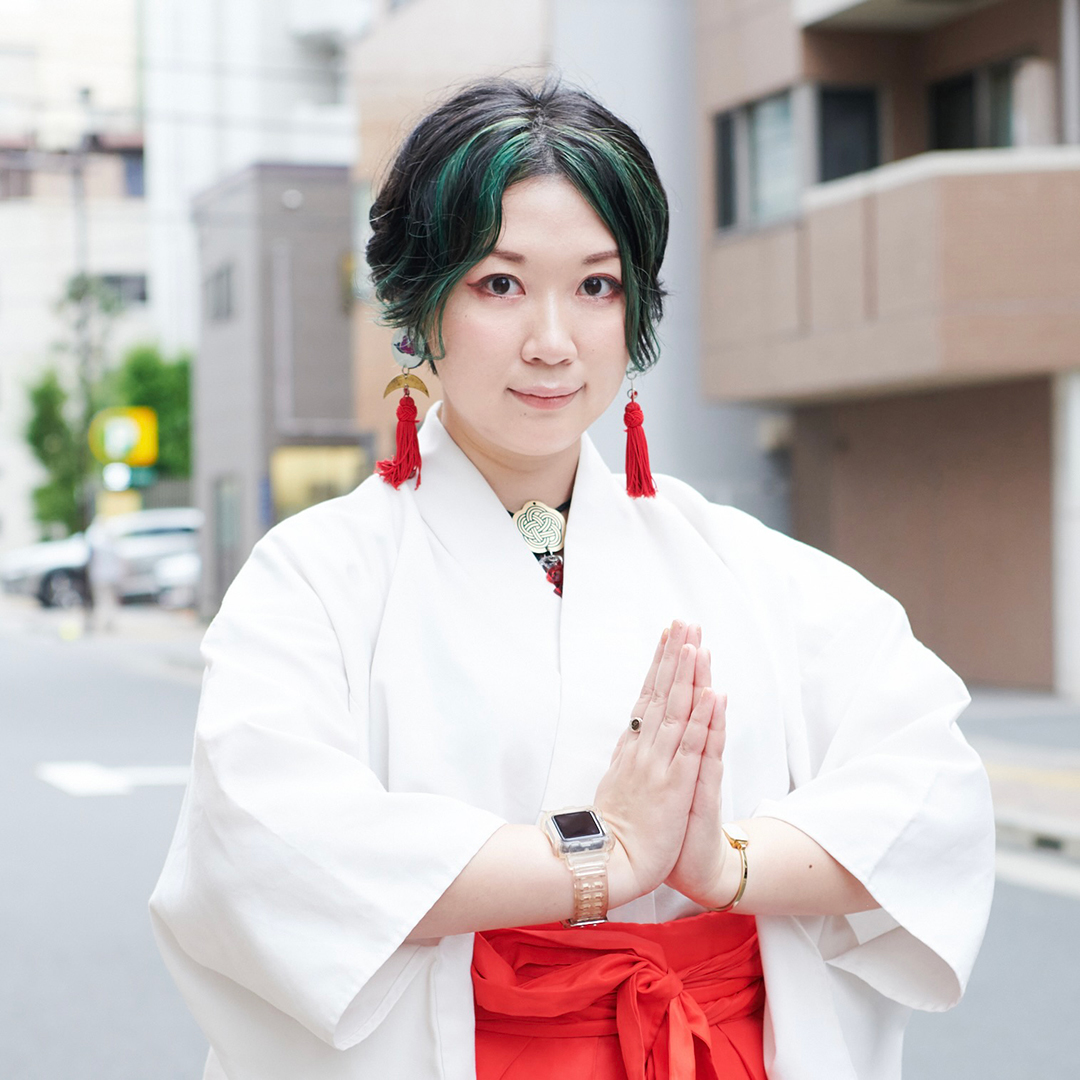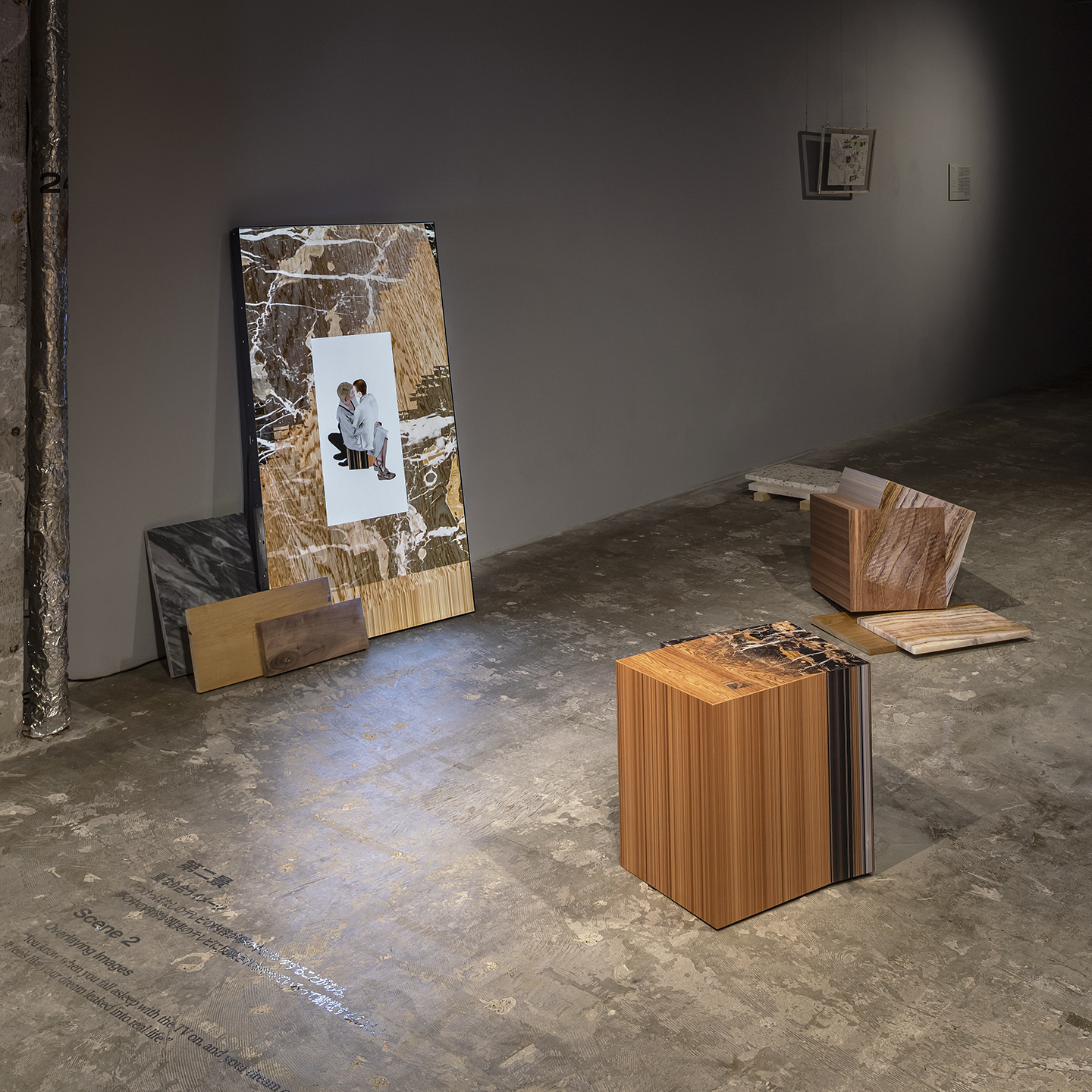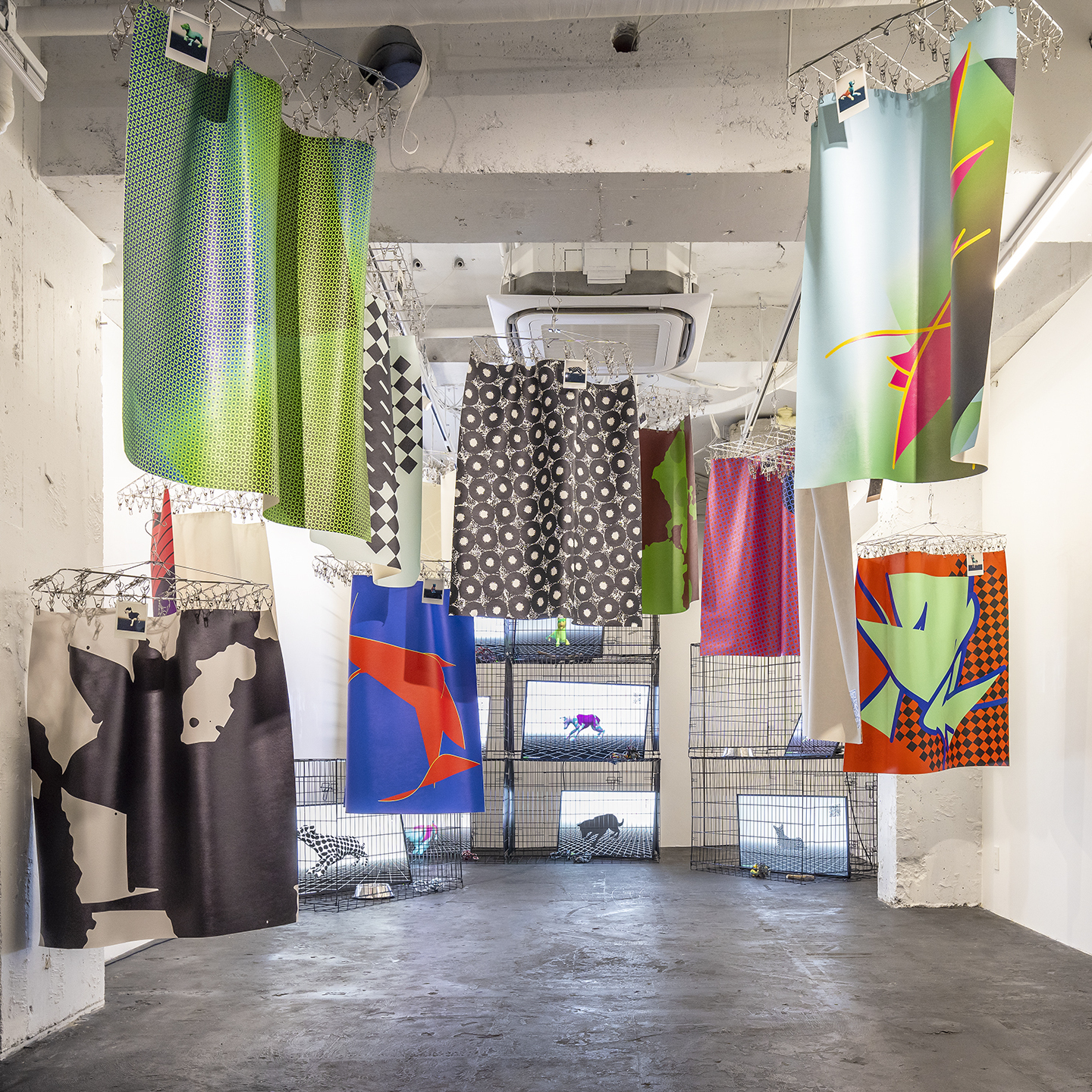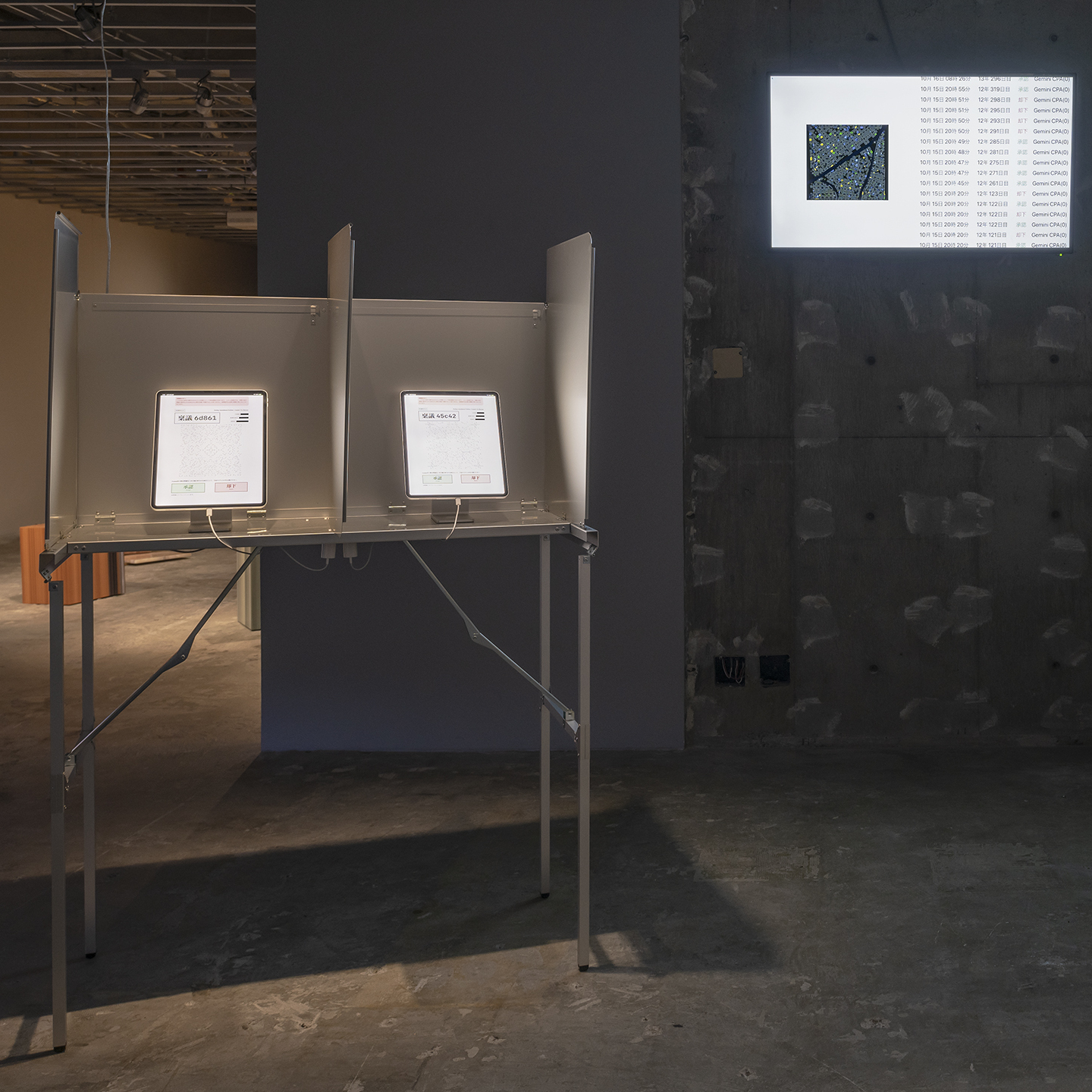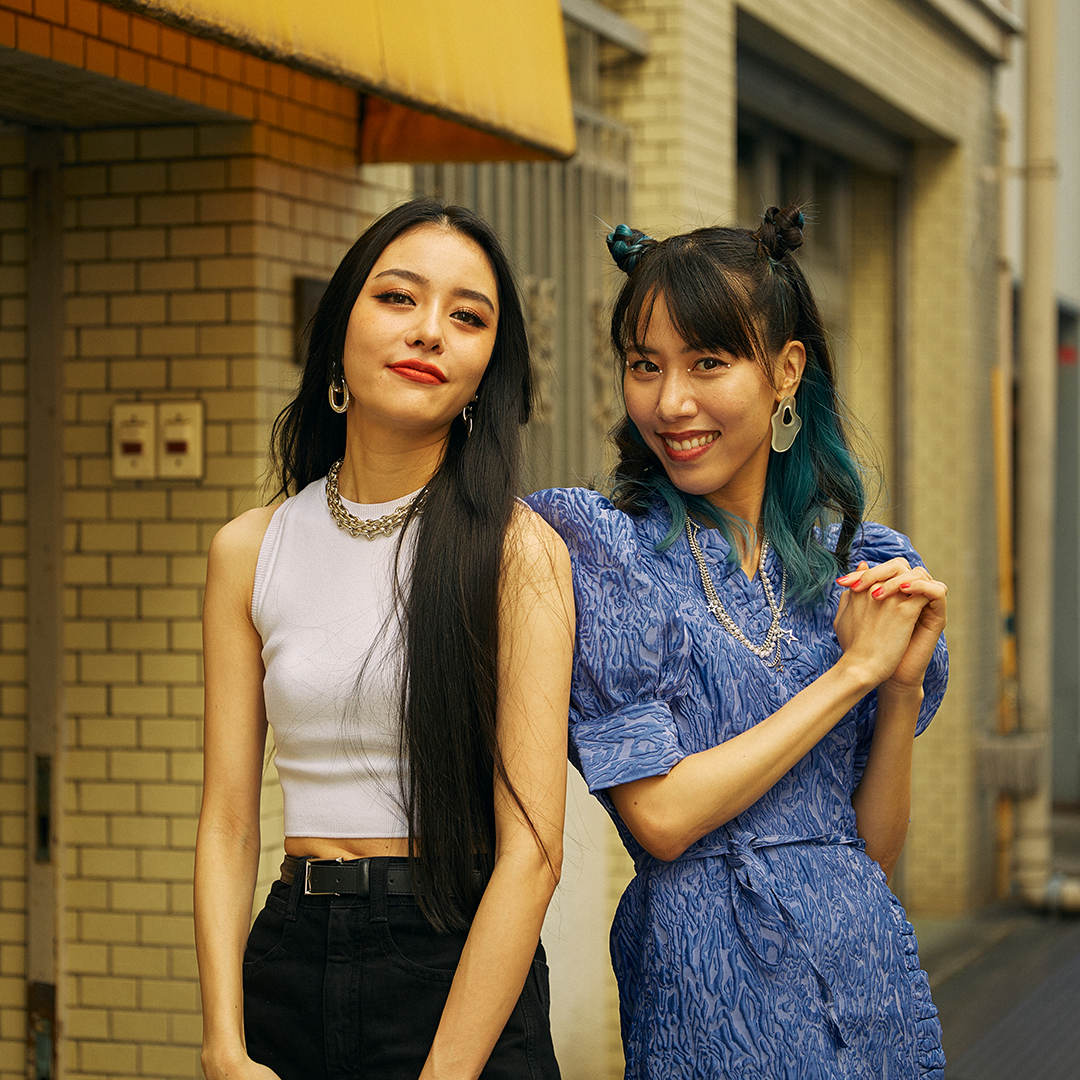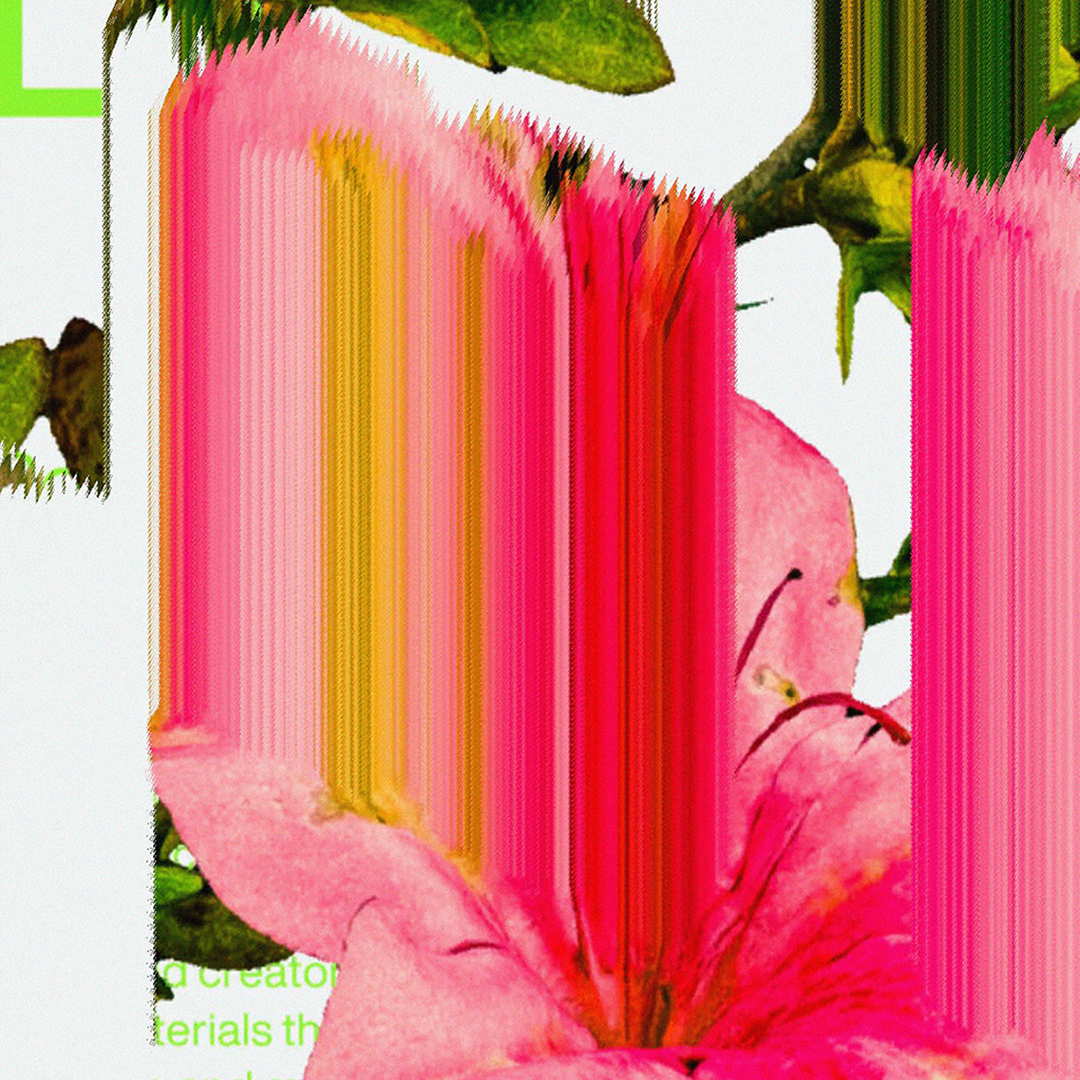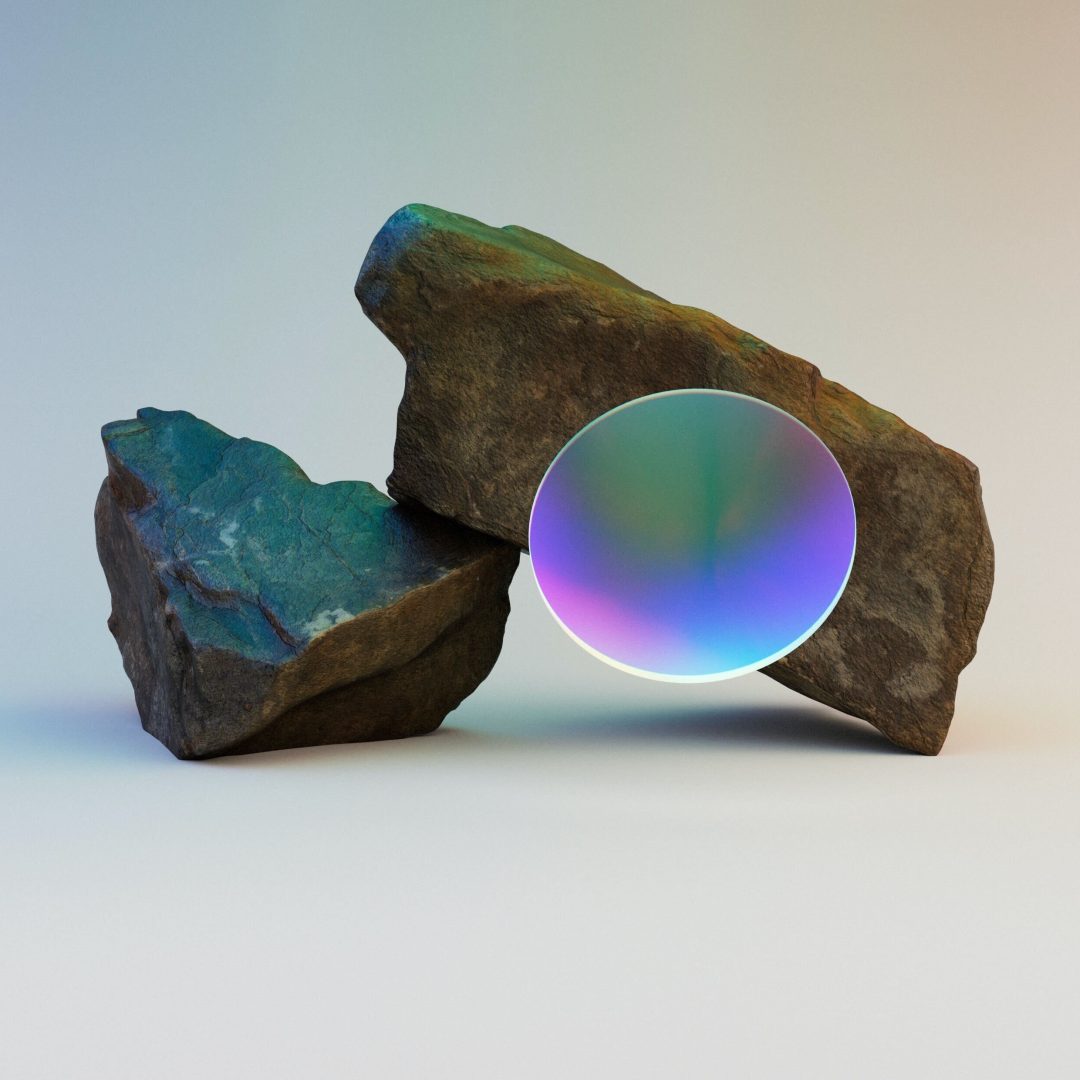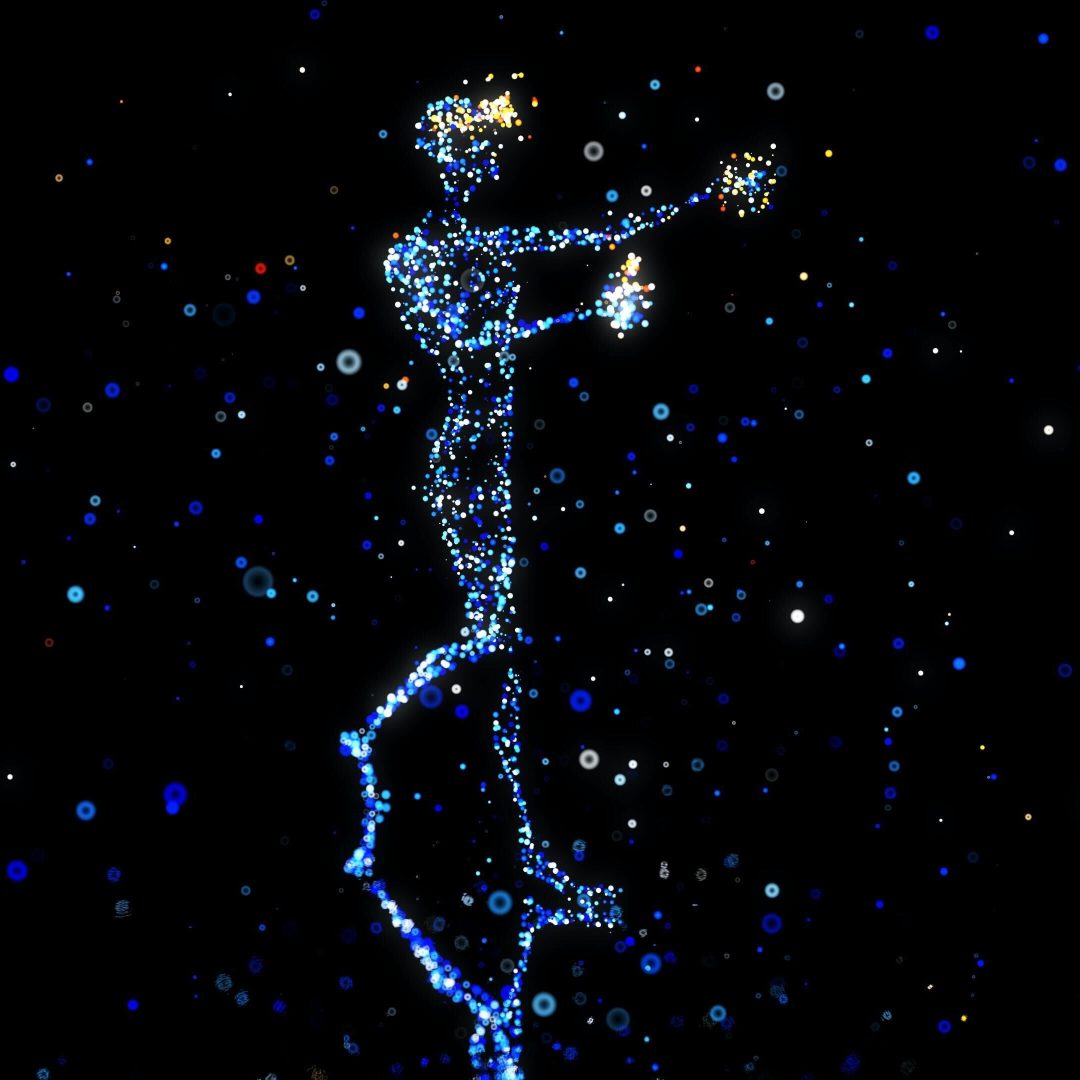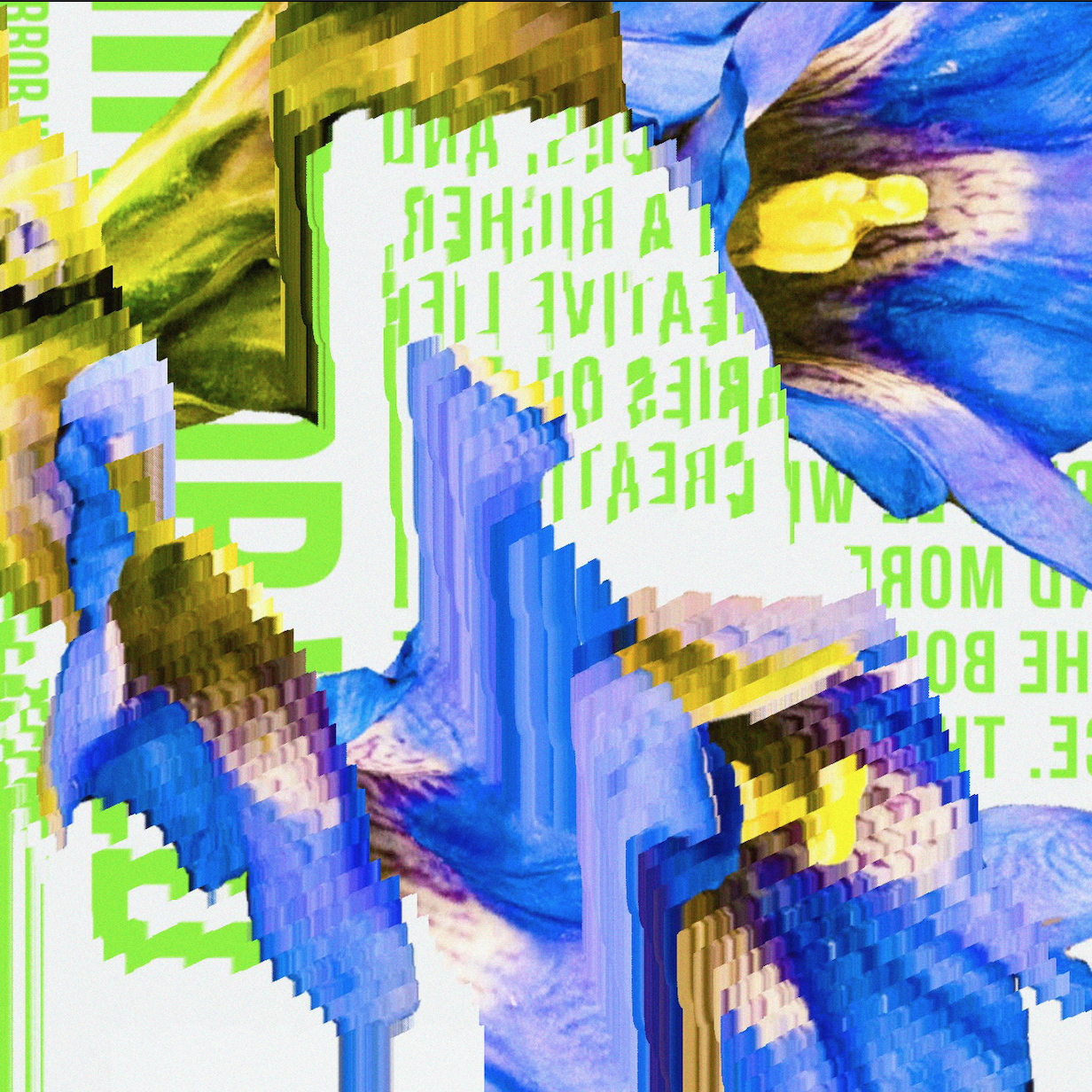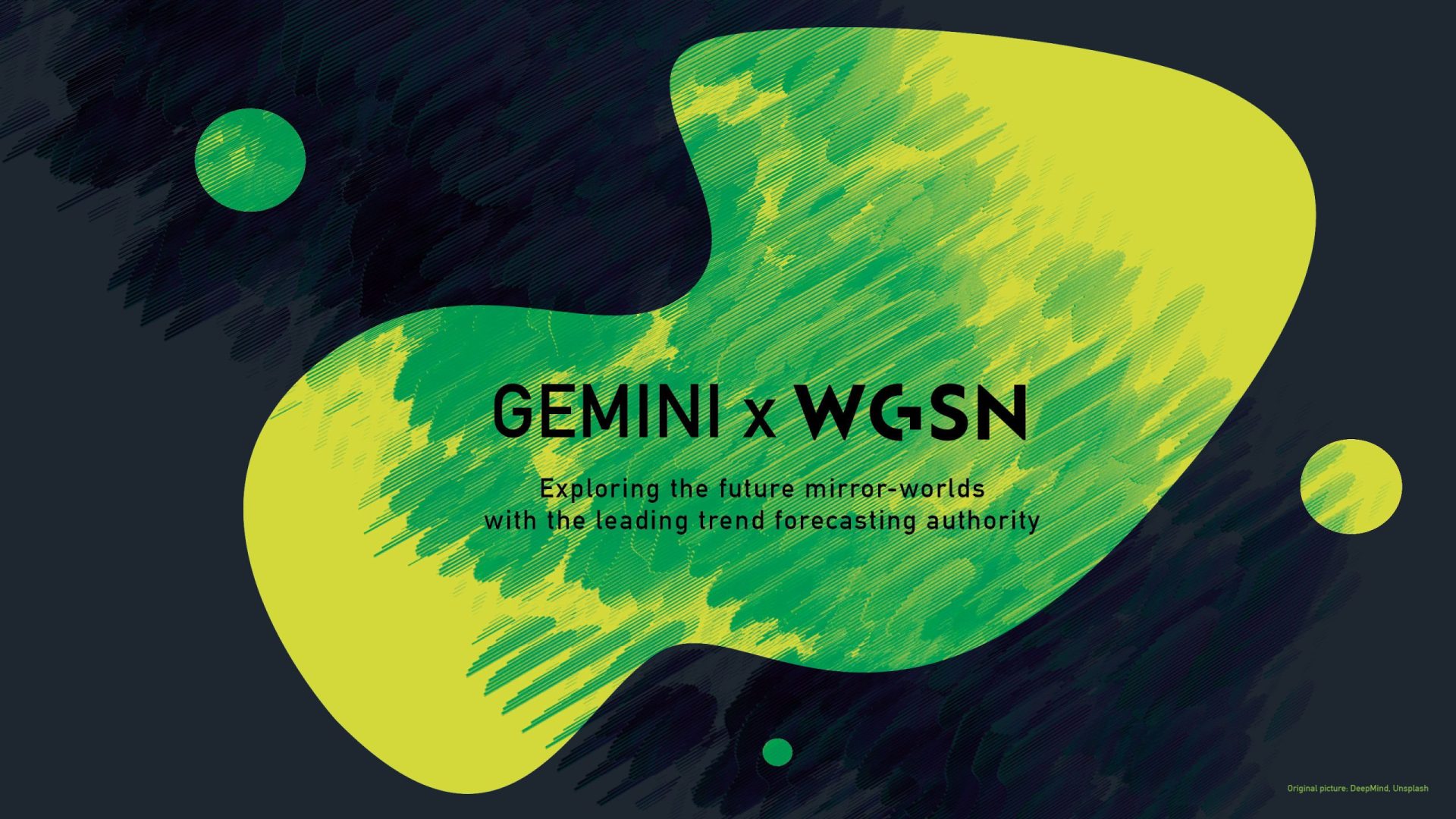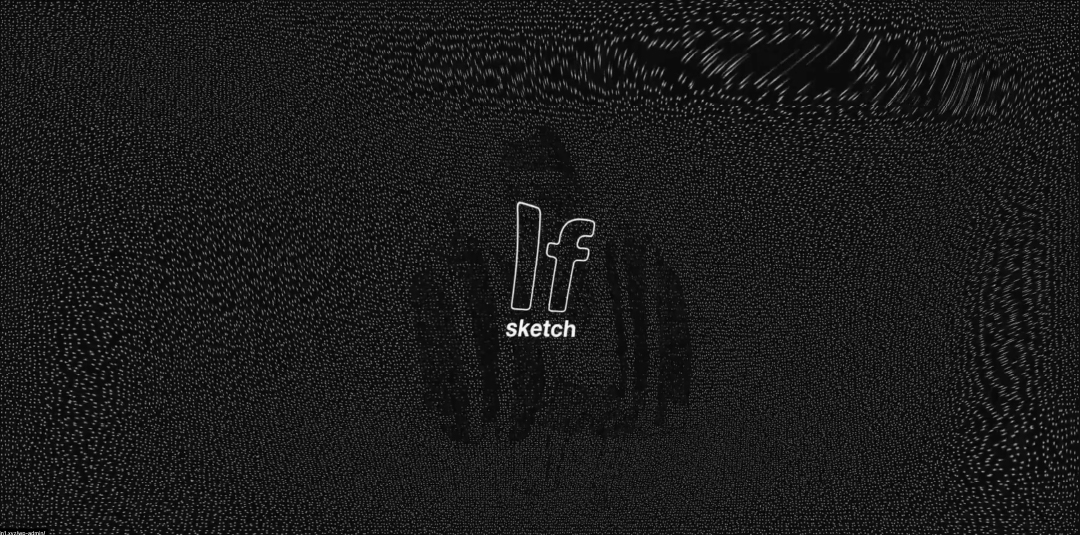ANREALAGE, a fashion brand that has expressed interactions of real and unreal by passing between analog and digital. Its designer, Kunihiko Morinaga, has been exploring new fashion by proactively utilizing the latest technologies.
As a result, a fashion app ‘SYKY for Apple Vision Pro(hereafter referred to as SAVP)’ for Apple’s first spatial computer, Apple Vision Pro (hereafter referred to as AVP), has been developed on July 22, 2024 by a collaboration with a digital fashion startup company, SYKY. It demonstrated a new fashion experience in a virtual space.
‘In the next century, it may be more real for people to spend in virtual spaces.’, says Morinaga. How does he recognize the possibility of fashion in the future, and how is he trying to expand it from what standpoint? We interviewed the behind-the-scene of development of SAVP, as well as the influence of virtual spaces and digital fashion to manufacturing and consumptions and his thoughts on fashion designers in the future.
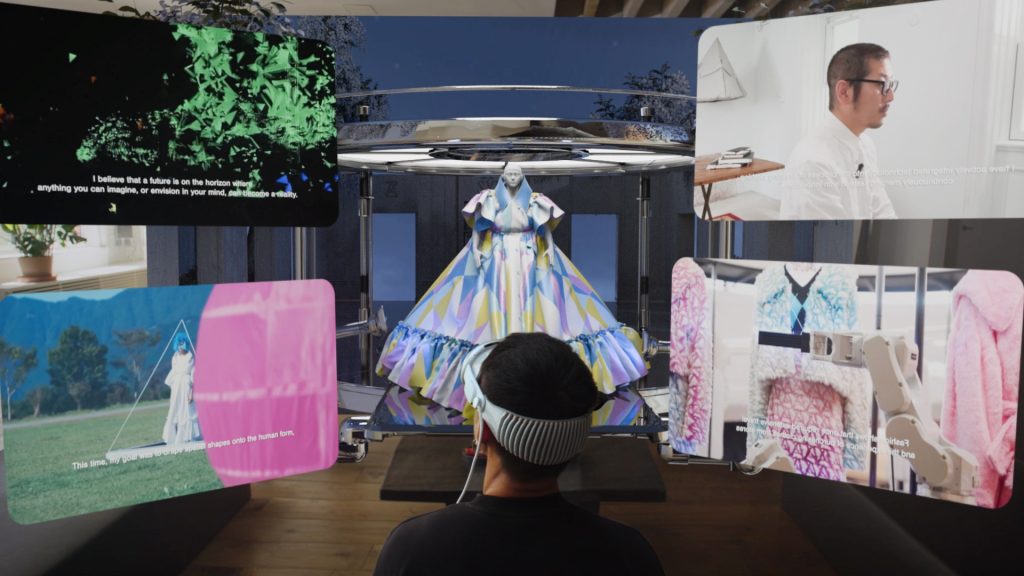
Experience of 22nd century through Apple Vision Pro
―I just experienced SAVP. ANREALAGE’s looks of Spring/Summer 2125 appear in front of a stage in the virtual space. By controlling AVP with lines of sight or fingers, I was able to change colors and textures or dresses, and see designs of all sides as wished.
The monitor displayed shows Morinaga’s interview video and you will learn his design concept deeper. It was a special experience as it was very realistic both visually and auditory.
Morinaga: Thank you very much. We developed SAVP as an app that you can experience ‘unreal fashion’ in a small room, not one that you would put cloths on avatars in a metaverse space.
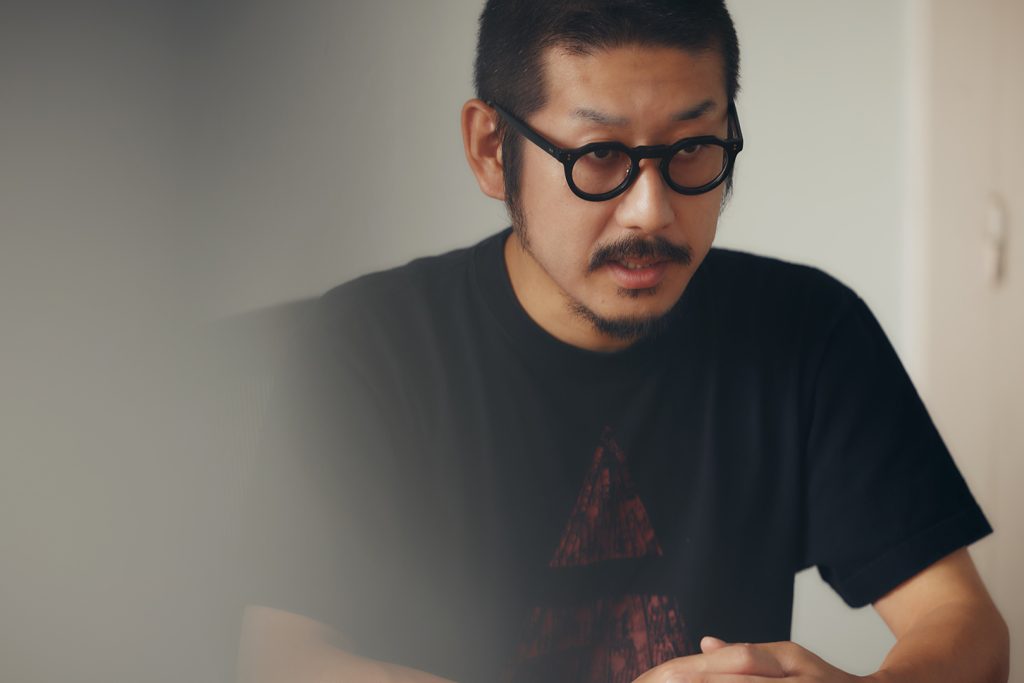
Born in 1980 in Kunitachi-shi, Tokyo. Graduated from Faculty of Social Sciences, Waseda University in 2003. Attended VANTAN Design Institute while in college, founded ‘ANREALAGE’ at the time of graduation. Started with patchwork hand-sewn clothing, now shows futuristic designs such as spheres and cubes utilizing the latest technologies to create unprecedented fashion.
―How did the idea of 2125 spring/summer digital looks with a theme of 100 years later come up?
Morinaga: Since the virtual space has different physical concept such as time and gravity, I wanted to show cloths in the future of 100 years, not the current time.
Also, the origin of this idea was ‘myth’. As you experienced, lines of sight are important in controlling AVP. When I thought what could express with fashion utilizing this aspect, I remembered Medusa, a monster from Greek myth.
―Medusa?
Morinaga: Medusa has a power to change people to stones with fear, by her eye contacts. In other words, she changes materials. Of course, cloths would not change to stones in the real world. However, I thought that this was possible in a virtual space and created looks with cloths materials that could be changed with lines of sight.
From SYKY’s YouTube channel
―AVP does not shut the real space off completely and you can faintly see the surrounding spaces. It felt refreshing that I was able to communicate with people while immersing myself in the virtual space.
Morinaga: AVP is a spatial computer that can maintain the connection with the real word or people around you. The real space can be seen through with multiple cameras on the device showing exterior spaces. Also, ambient lights of the real space are reflected in the virtual space, making natural shadows of objects in the virtual space.
We used data with lower resolution than intended for this SAVP for the app to smoothly work, but by taking ambient lights of the real space in, the texture of skin appeared natural and cloths appeared very realistic as if it was right in front of you.
Similarly, as for the audio, when someone in the real space talks to you, the sound in the virtual space is adjusted and you can have natural conversations.
―I understand that it was created utilizing the nature or AVP well.
Morinaga: Yes. I personally take videos with devices dedicated for AVP as well, but AVP can record everything happening in the space, unlike conventional photos or videos. Then if you playback what you recorded, what happened a minute before happens again in front of you. It is interesting as it feels like you are experience what you already experienced again, from a different angle.
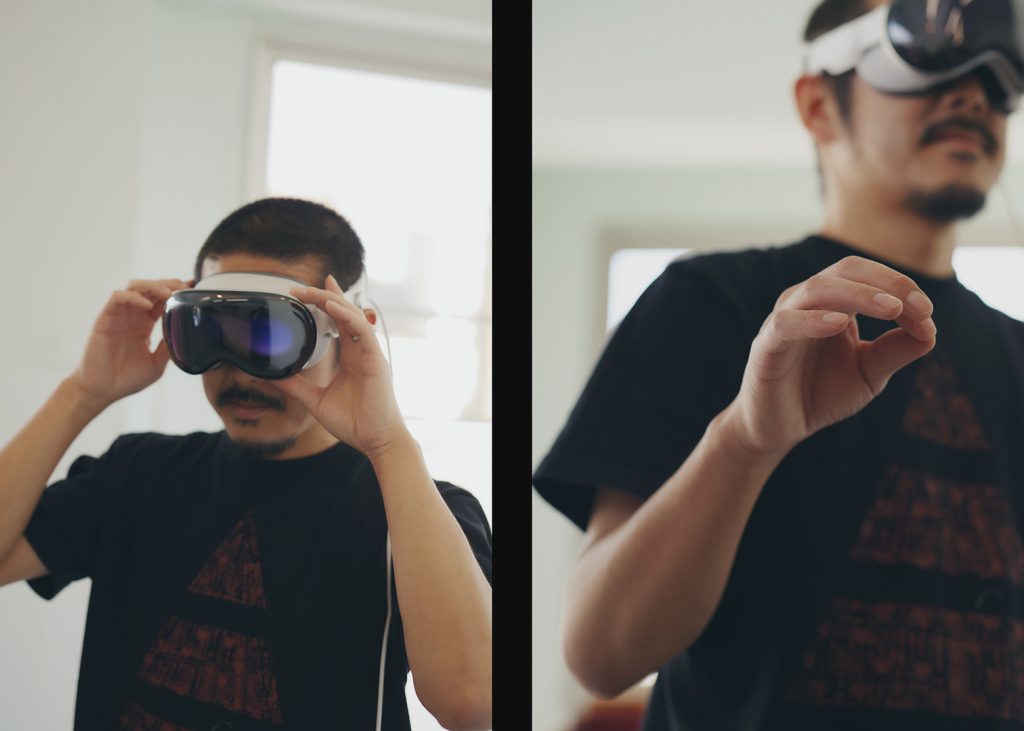
Three reason of the offer from the fashion platform, ‘SYKY’
―How did you meet SYKY that you collaborated with?
Morinaga: SYKY is a luxury fashion platform, which was founded by its CEO, Alice Delahunt, who was the Chief Digital Officer at Ralph Luren. It welcomed Nicola Formichetti, who was a stylist for Lady Gaga or the Fashion Director at UNIQLO, as the Artistic Director in January 2024.
We received an offer from Nicola to ‘pursue the possibility of digital fashion’, right when we were getting excited about him, who is in a leading position in the fashion industry, getting started with digital fashion.
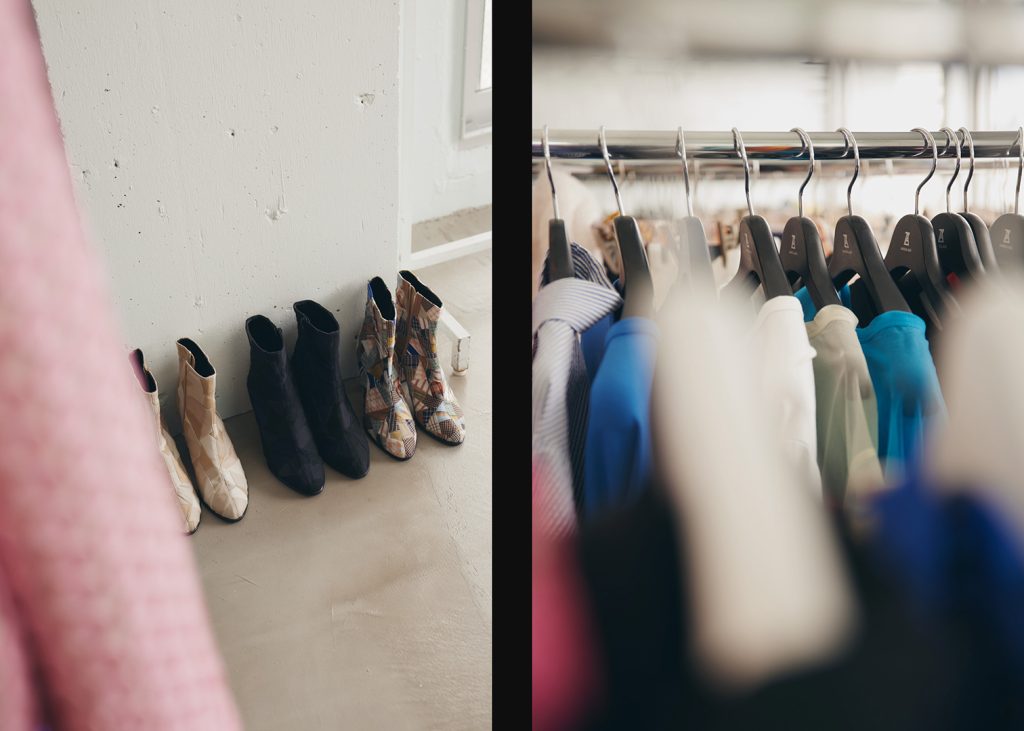
―What about ANREALAGE do you think Nicola felt affinity for?
Morinaga: I feel that there were two elements. The first element is that we have an expandable vision to see ‘how to create spaces around people’, which was shown as cloths we made for 2021 S/S COLLECTION ‘HOME’, in sized of a house.
The second element is that we had been proactively utilizing technologies to create cloths. After the pandemic, we are designing clothing digitally and fittings are done virtually.
I believe that we were chosen as a brand that could create the world’s first AVP fashion app because of our concepts and experience crossing analog and digital like this, and because of our accumulated data.

Emerging digital fashion. Challenge of ‘Texture’ still exists
―How did the possibility of fashion expand when the material of clothing became limitless?
Morinaga: When you think about materials at the raw material level, it is very difficult to create something completely new. You need to exploit something finite to create textiles.
Right now, not only the fashion industry, but also other various industries are trying to figure out how to deal with environments and resources, but I feel that ‘making thing’ may become more negative behavior in the future, unless the conventional ideas drastically change.
After this experience of making clothes without any limits for materials with AVP, I felt possibilities that we could change the world drastically, if we were able to make things without exploitation and the material could be changed freely for a single cloth.
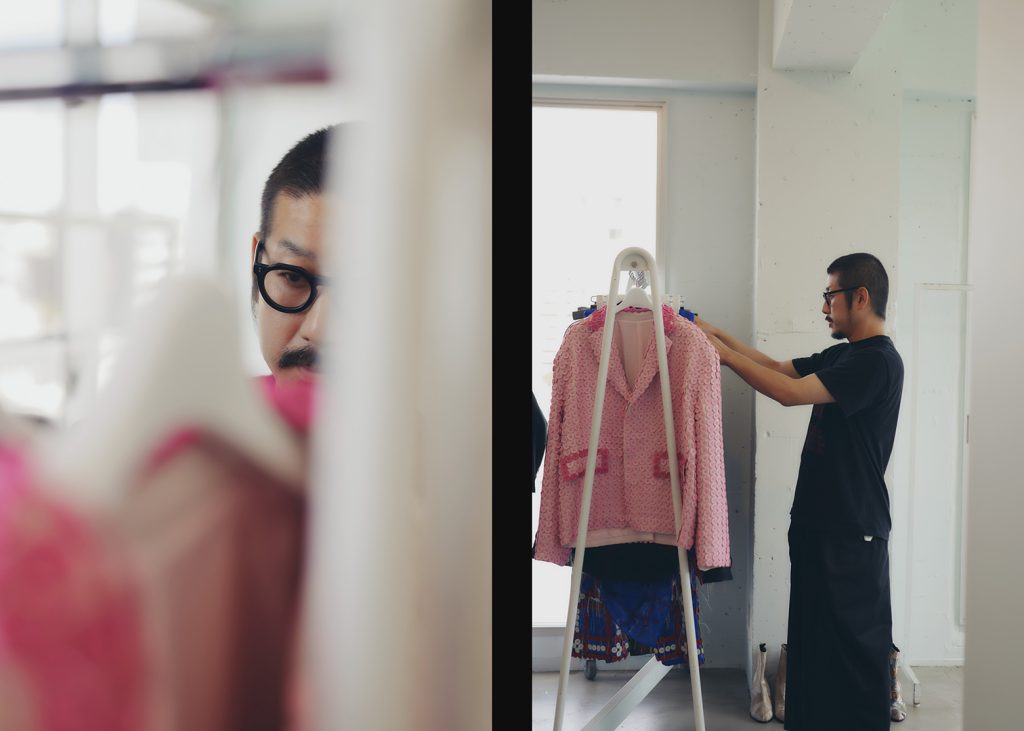
―How do you think it would affect consumers’ behaviors?
Morinaga: Through the pandemic, the experience of purchasing real clothing in digital spaces became more popular, and people are experiencing fashion without physically moving around.
The challenges remaining in those situations that cannot be solved are the textures or touch of clothing. I feel that in the future, texture of things will have higher value and consumers will want it more.
The meaning for ANREALAGE to pursue textures of clothing
―You feel that textures or touch could have higher value in the future. Is there any experience you had to feel that way?
Morinaga: I think it is largely influenced by a project ‘echo’, which we worked on in 2018 with ‘Dialogue in the dark’ that creates entertainments in the dark, and ‘Rhizomatiks Research’, a research section of a creative group, Rhizomatiks.
In this project, we provided perception experiences in unusual spaces of dark, or made clothes that respond to those spaces. When I had conversations with visually impaired people about textures and touch as one of those processes, I realized that fashion is not only about something you can see with your eyes.
Clothing itself emits signals and recognises the distance to space, ‘echo’. Clothing as a new body organ, different from the eye, which receives light and recognises space.(From YouTube channel “echo project“)
―Specifically, what did you think of?
Morinaga: For example, it is said that visually impaired people are very sensitive to touch of cloths, and they remember designs or function of clothing by the touch of the fabric. When they purchase cloths, they remember when they can use the cloth or what design and color the cloth has, by touch of it. Also, they remember what material is suitable for what weather, so they rarely pick wrong cloths for the weather.
Further, this is called echo location, but some people can sense echo of sounds they made, recognizing their location in the area they are in with a little sound echo like bats or dolphins.
―So people’s five senses are originally had that sensitive to receive information.
Morinaga: I wanted to showcase that possibility, so in ‘echo’, as the closest cloth to sense of touch, we created clothing that tell you the distance to objects or walls by vibration using sensors that can measure distances, so the sense of touch would be more sensitive.
If you actually wear those clothes, you can sense the space you are in with your body, even if it is a dark space. If these clothes are expanded, you would be able to sense what are outside the building you are in, meaning that senses that people do not have can ‘be worn’.
Thinking that way, I think it has a big meaning to pursue the possibility of what you can feel with your skin.
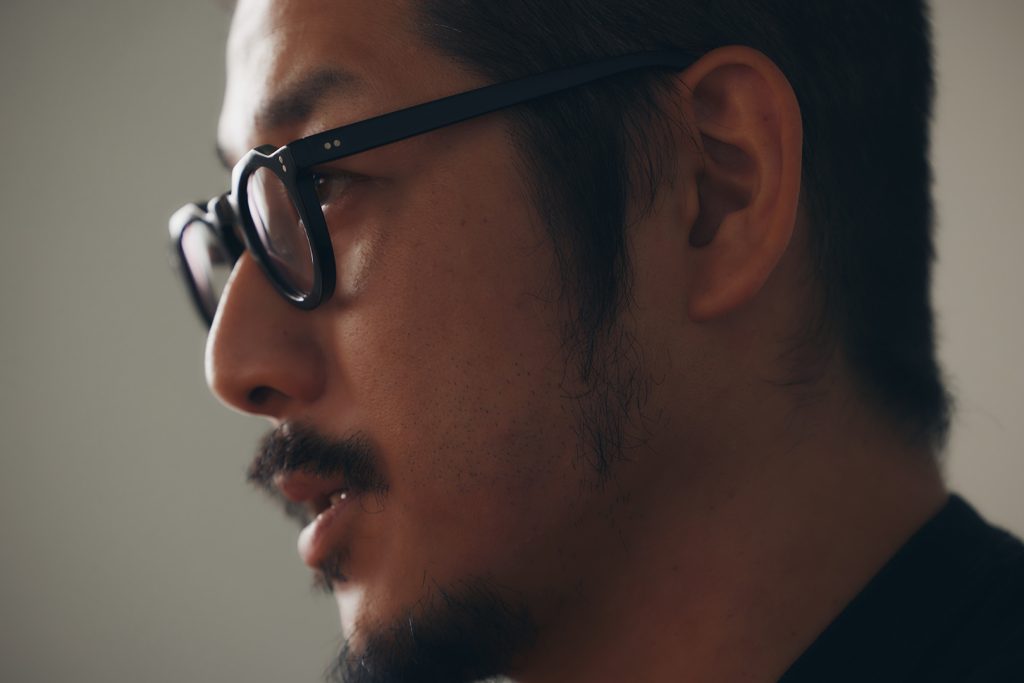
‘First year of digital fashion’ has come. Virtual experiences reverse existing values
―We can say that with SAVP, fashion has overcome challenges that could not be resolved before and now we can feel the reality that could not be realized just with screens.
Morinaga: It is indeed ‘first year of digital fashion’. I heard that at Paris Fashion Week this year, not only ANREALAGE, but also world-class luxury brands will record their shows so that they can be experienced again. I hope people can enjoy the experience of digital fashion more in the future.
―How do you think fashion will change when the world of digital fashion expands?
Morinaga: I think that digital technology and fashion are closer than you would think. Especially, Apple Watch and AVP can be recognized as fashion as something to be worn. Also, since AVP can obtain physical body data, I think we can make approaches to fashion utilizing it.
Additionally, I believe that there will be more time for people to spend in virtual spaces. As we spend more time to be exposed to and be immersed in the realistic virtual spaces like AVP, we would need something there as well to express ourselves or decorate. I feel the possibility of new fashion market emerging in that sense.
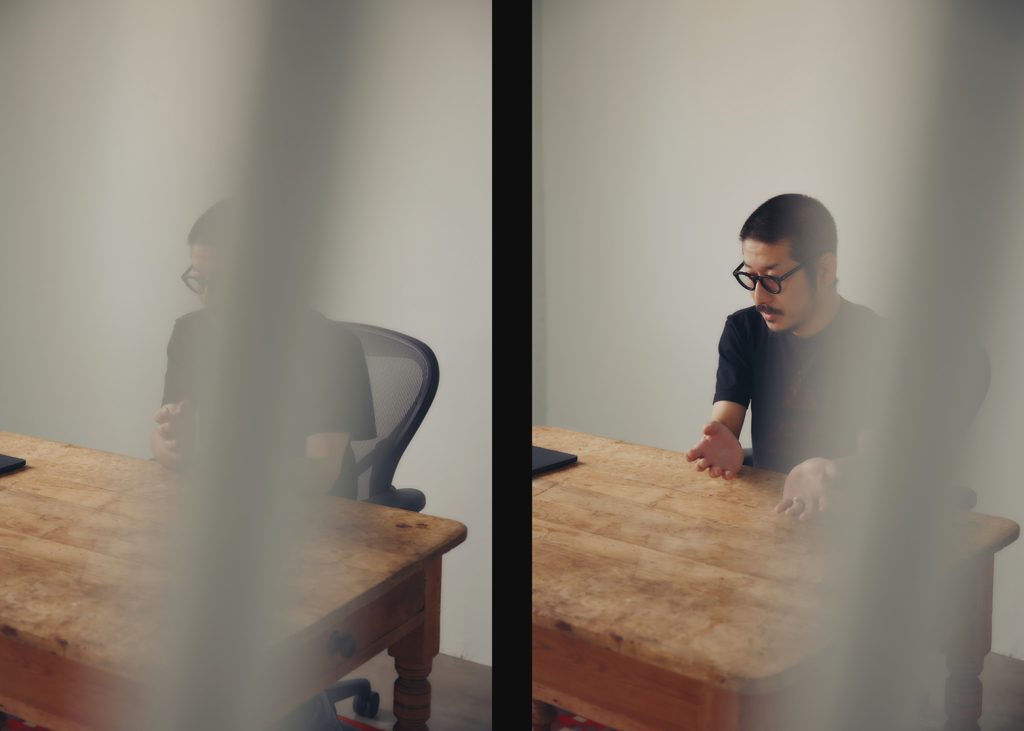
―In contrast, what risks do you think digital fashion would have?
Morinaga: As the boarder with the real world becomes seamless, I believe some kind of adverse effect would be caused. Cloths are originally something to divide yourself and the space or yourself and others, and to protect yourself, and they function as a layer for yourself to stay yourself.
However, when you go in the virtual world with AVP, you cannot see your own cloths that you are wearing. In other words, you become seamless forcibly. When there is no boarder between the real world and the digital world, there is a concern that the original function of cloths would be lost.
Also, we currently do not have any laws applicable to digital world and anything is allowed, so there are concerns how we should deal with it with senses of ethics.
―I see.
Additionally, I wonder how it affects children who will be living in the future world. Our generation have spent a long time in the real world, and the unusual digital world appeared in the later part of our lives.
However, for young people, digital world is more usual than the real world, and it would feel realistic. You could see people in the digital world even if you are away from them in the real world and keep the connections with them, and that would change the feeling of when you cannot see people.
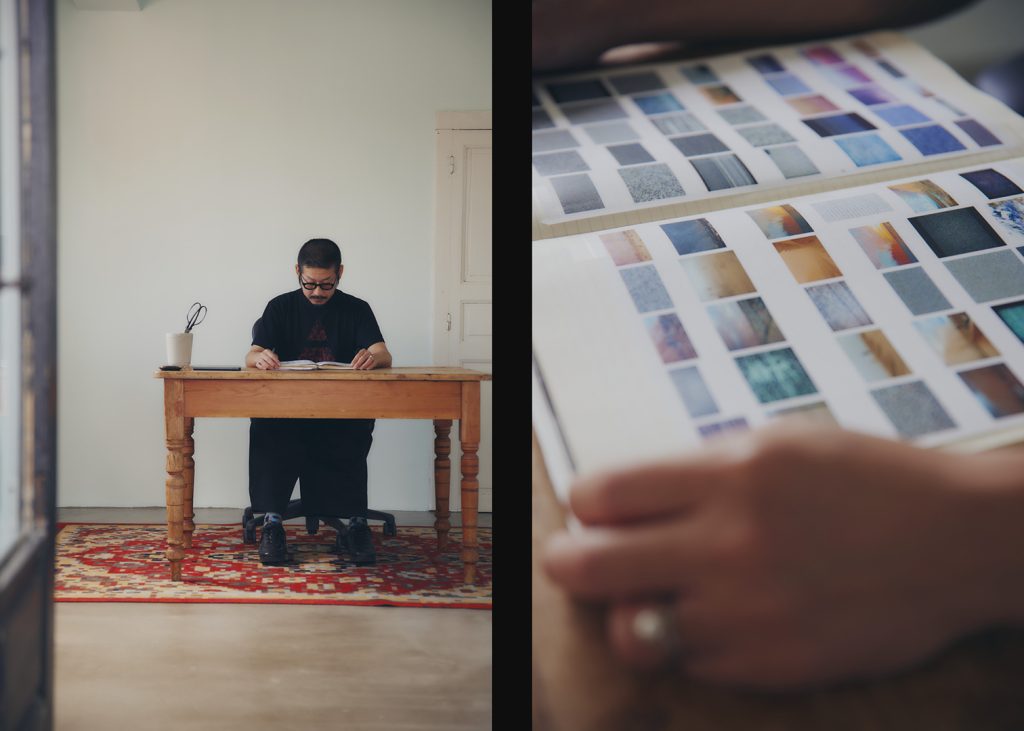
What it the goal for fashion designers in the future?
―You are working to raise fashion designers of the next generation as well. How do you think the education changes in the future?
Morinaga: The conventional fashion education has been showing the path to a certain top location through the authorities and values that European luxury fashion brands had built. However, it is a very had process for Japanese designers.
That is why I believe that if you expand your view and show that fashion can be connected to various aspects of the world, young people can expand the possibility of fashion more freely. In fact as ANEREALAGE, we were able to make things in equal relationships by pursuing a material ‘photochromic’ which drew attentions from Fendi or Beyonce.
We will be able to realize the expansion with AI in the future. I think if we are that bold enough to try to expand fashion with a totally different view, we will be able to make something different and people who aim to be fashion designers in Japan will have their future.
―Lastly, please tell us what you would like to work on in the future.
Morinaga: I am now interested in robots. I think there is a boarder whether people have emotions towards robots. I often think how we could generate emotions towards robots. I think we could make robots which are not with hard impressions, but with cuter impressions, with power of fashion.

Information of the work
-

SYKY for Apple Vision Pro
SYKY for Apple Vision Pro
Guest Profile
-
Kunihiko Morinaga
Kunihiko Morinaga
Born in 1980 in Kunitachi-shi, Tokyo. Graduated from Faculty of Social Sciences, Waseda University in 2003. Attended VANTAN Design Institute while in college, founded ‘ANREALAGE’ at the time of graduation. Started with patchwork hand-sewn clothing, now shows futuristic designs such as spheres and cubes utilizing the latest technologies to create unprecedented fashion.
- ANREALAGE Website: https://www.anrealage.com/
- X: https://x.com/ANREALAGE_
- Instagram: https://www.instagram.com/anrealage_official/
Co-created by
-
Eri Ujita
Writer, Editor
Eri Ujita
Writer, Editor
Freelance writer and editor. Specialises in communication design and sound art. I try to capture and convey the ‘good cycle created by expression’.
-
Tomohiro Takeshita
Photographer
Tag
Share
Discussion
Index
Index
Archives
Recommend
Recommend
Recommend
Recommend
Recommend
-

{ Community }
The Art Director Of Cluster Talks About UI/UX Design Of “A World Without Touch”
The Art Director Of Cluster Talks About UI/UX Design Of “A World Without Touch”
The Art Director Of Cluster Talks About UI/UX Design Of “A World Without Touch”
-

{ Special }
Adventure Metaverse
Adventure Metaverse
Adventure Metaverse
-

{ Special }
Kind Offering SNS
Kind Offering SNS
Kind Offering SNS
-

{ Community }
Working In The Metaverse
Working In The Metaverse
Working In The Metaverse
Hot topics
Hot topics
Hot topics
Hot topics
Hot topics
-

{ Community }
Scent Transcends Memory to Change Behavior. The Future of Digital x Olfaction, by Scent Marketing Pro Gouchi Hamada
Scent Transcends Memory to Change Behavior. The Future of Digital x Olfaction, by Scent Marketing Pro Gouchi Hamada
Scent Transcends Memory to Change Behavior. The Future of Digital x Olfaction, by Scent Marketing Pro Gouchi Hamada
-

{ Community }
The stage is a restroom designed by Tadao Ando. Possibilities of media mix that GEMINI pioneers.
The stage is a restroom designed by Tadao Ando. Possibilities of media mix that GEMINI pioneers.
The stage is a restroom designed by Tadao Ando. Possibilities of media mix that GEMINI pioneers.
-

{ Community }
“Conveying the Moment of ‘Now’ in History: Catalan Artist Xavi Bové’s Light Expressions”
“Conveying the Moment of ‘Now’ in History: Catalan Artist Xavi Bové’s Light Expressions”
“Conveying the Moment of ‘Now’ in History: Catalan Artist Xavi Bové’s Light Expressions”
-

{ Community }
“Designing with Heart: How Amanda Talbot is shaping a better future through emotionally intelligent AI”
“Designing with Heart: How Amanda Talbot is shaping a better future through emotionally intelligent AI”
“Designing with Heart: How Amanda Talbot is shaping a better future through emotionally intelligent AI”
-

{ Community }
Unearthing the Future: How ancient history can guide modern innovation with Darius Arya
Unearthing the Future: How ancient history can guide modern innovation with Darius Arya
Unearthing the Future: How ancient history can guide modern innovation with Darius Arya
-

{ Community }
Interview with Masayoshi Yokoyama from Ryu Ga Gotoku Studio. Talks about reality in games and the future of the industry
Interview with Masayoshi Yokoyama from Ryu Ga Gotoku Studio. Talks about reality in games and the future of the industry
Interview with Masayoshi Yokoyama from Ryu Ga Gotoku Studio. Talks about reality in games and the future of the industry
-

{ Community }
The new form of pilgrimage. What is the border of real and fictional worlds that Petra Szemán pictures?
The new form of pilgrimage. What is the border of real and fictional worlds that Petra Szemán pictures?
The new form of pilgrimage. What is the border of real and fictional worlds that Petra Szemán pictures?
Special
Special
Special
Special
Special
Featured articles spun from unique perspectives.
What Is
“mirror world”...
What Is
“mirror world”...
What Is
“mirror world”...
What Is
“mirror world”...
What Is
“mirror world”...
“mirror world”... What Is
“mirror world”... What Is
“mirror world”... What Is
“mirror world”... What Is
“mirror world”...
Go Down
Go Down
Go Down
Go Down
Go Down
The Rabbit
The Rabbit
The Rabbit
The Rabbit
The Rabbit
Hole!
Hole!
Hole!
Hole!
Hole!
Welcome To Wonderland! Would You Like To Participate In PROJECT GEMINI?

